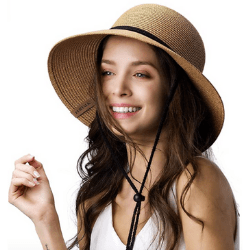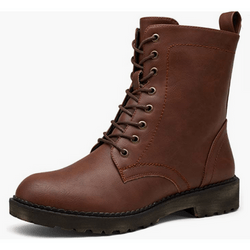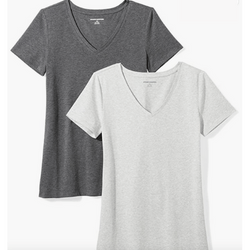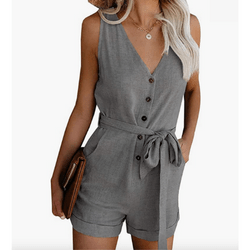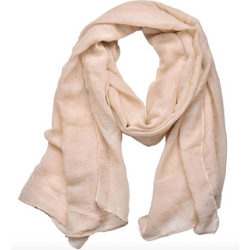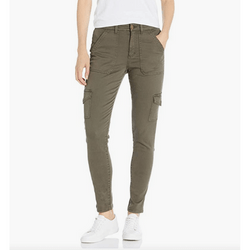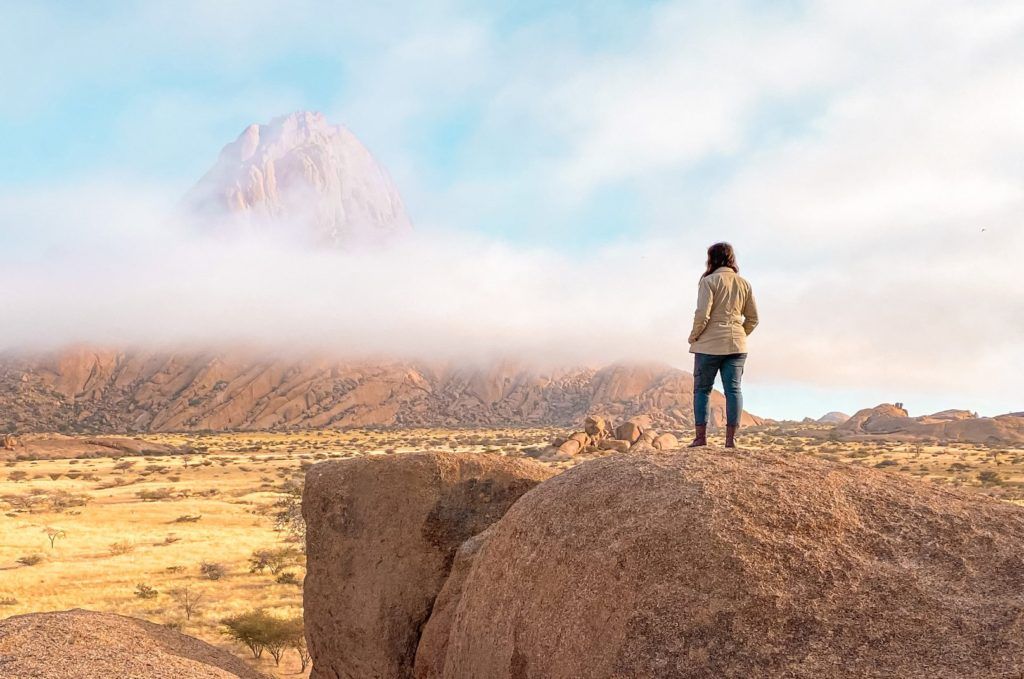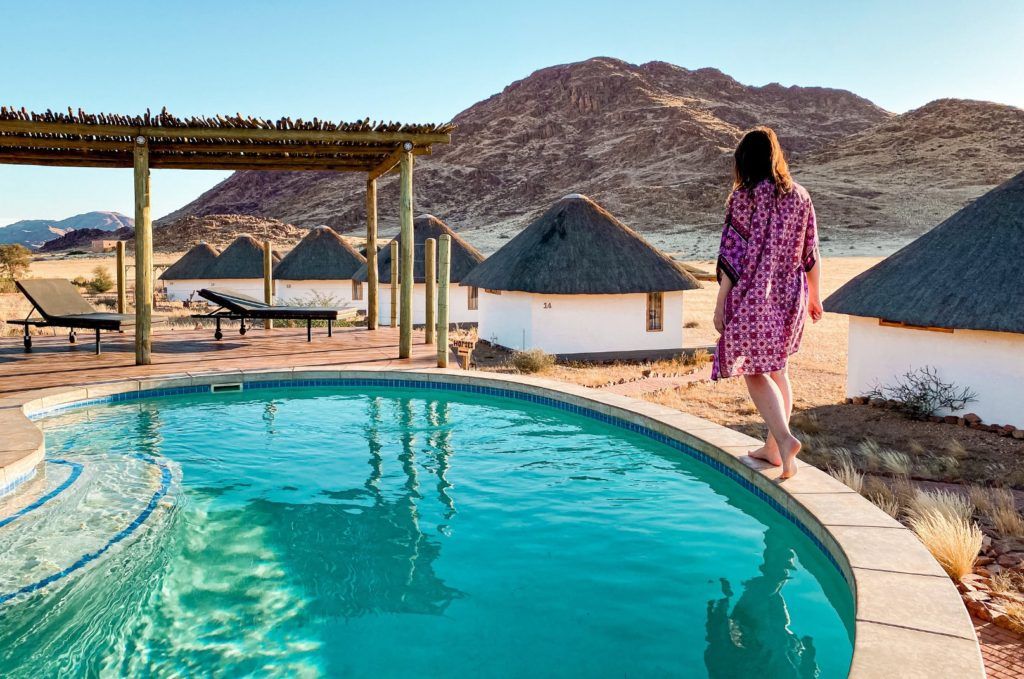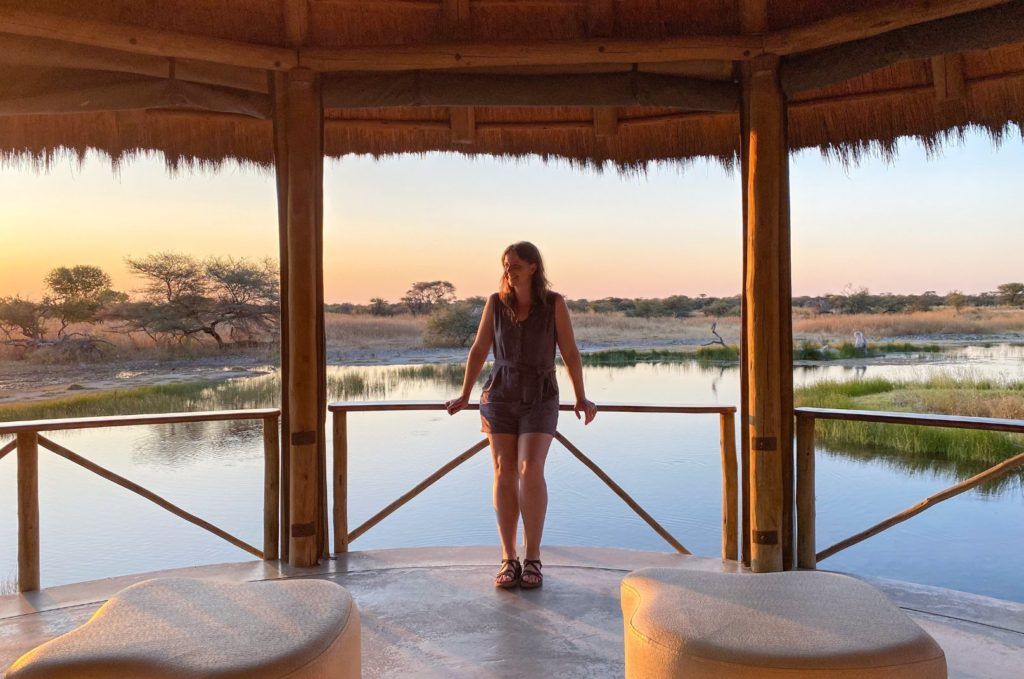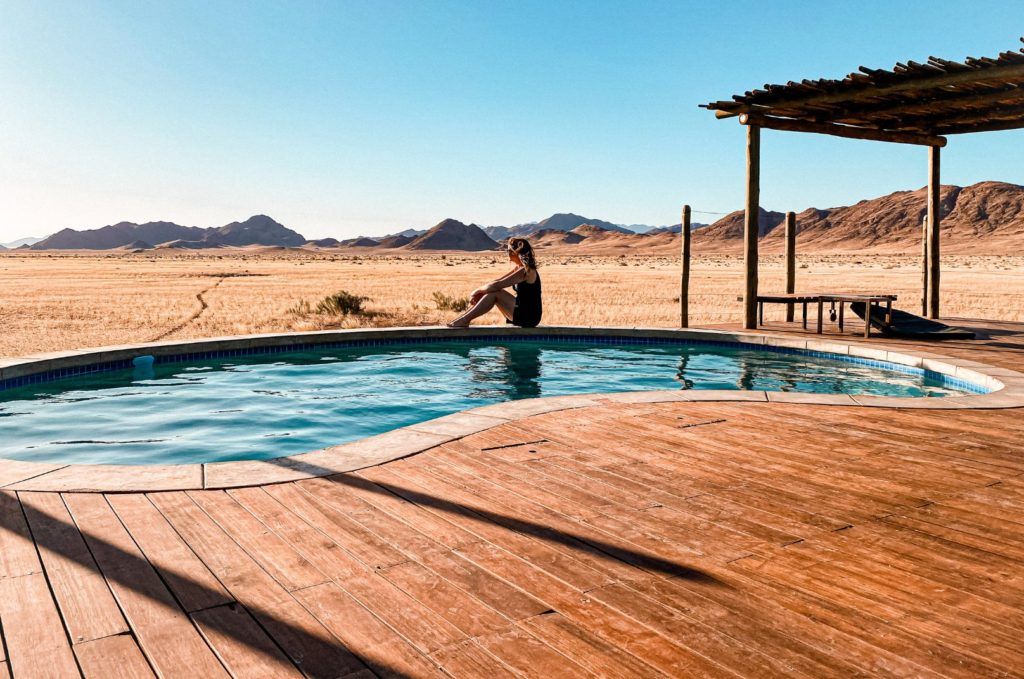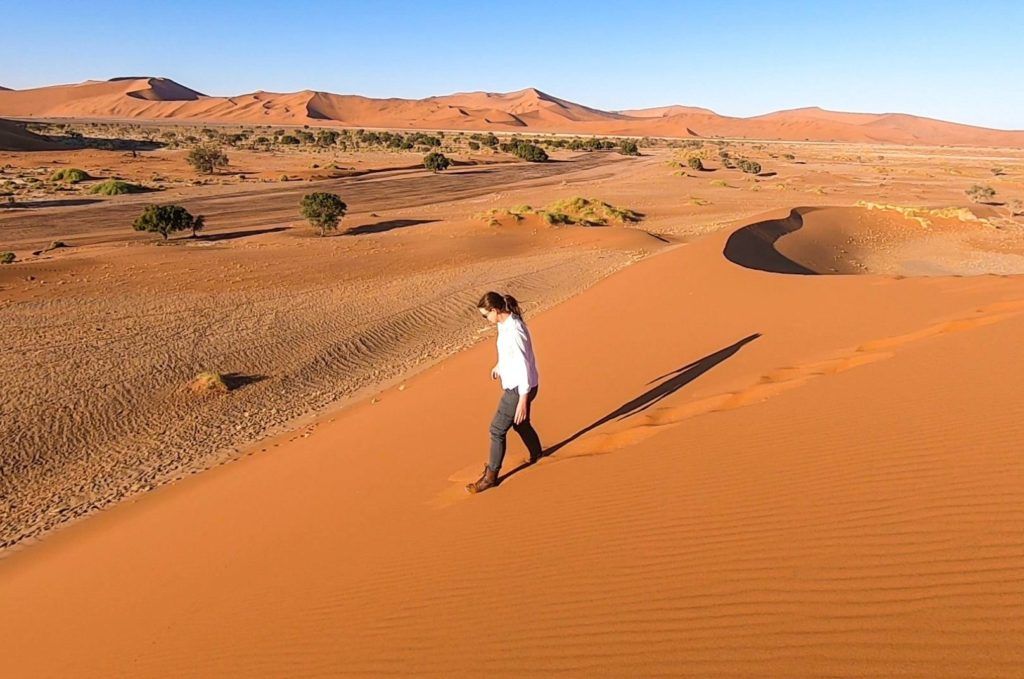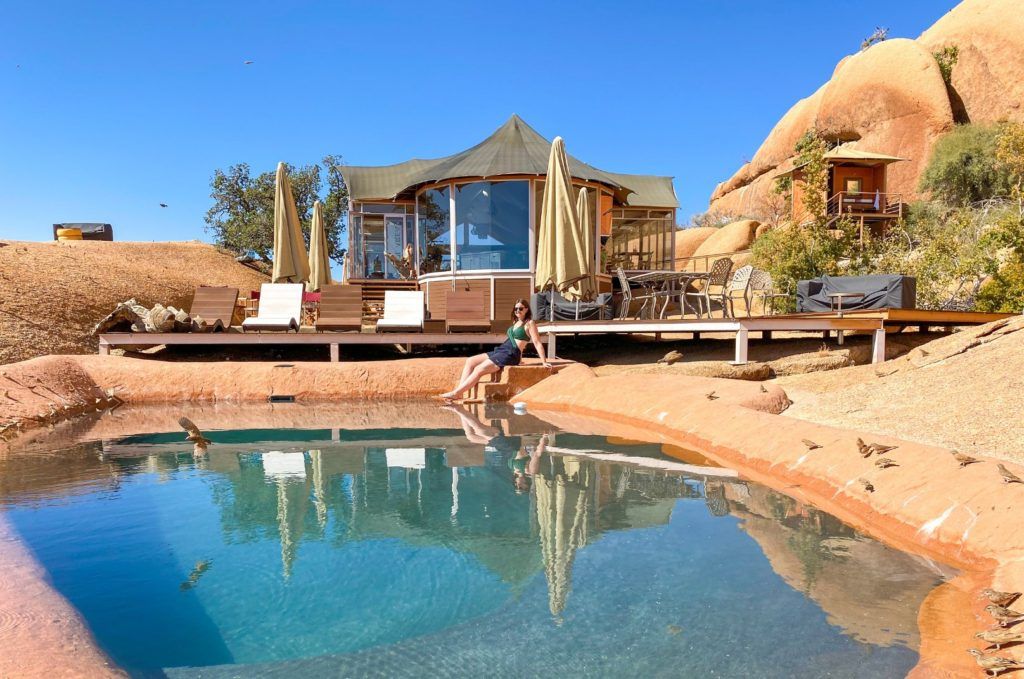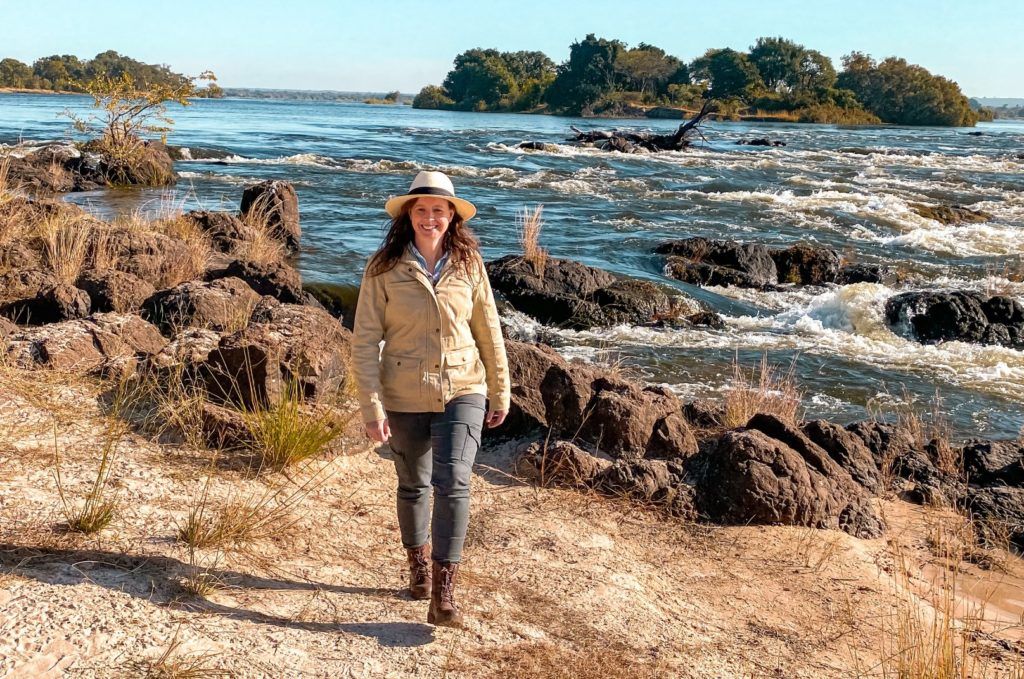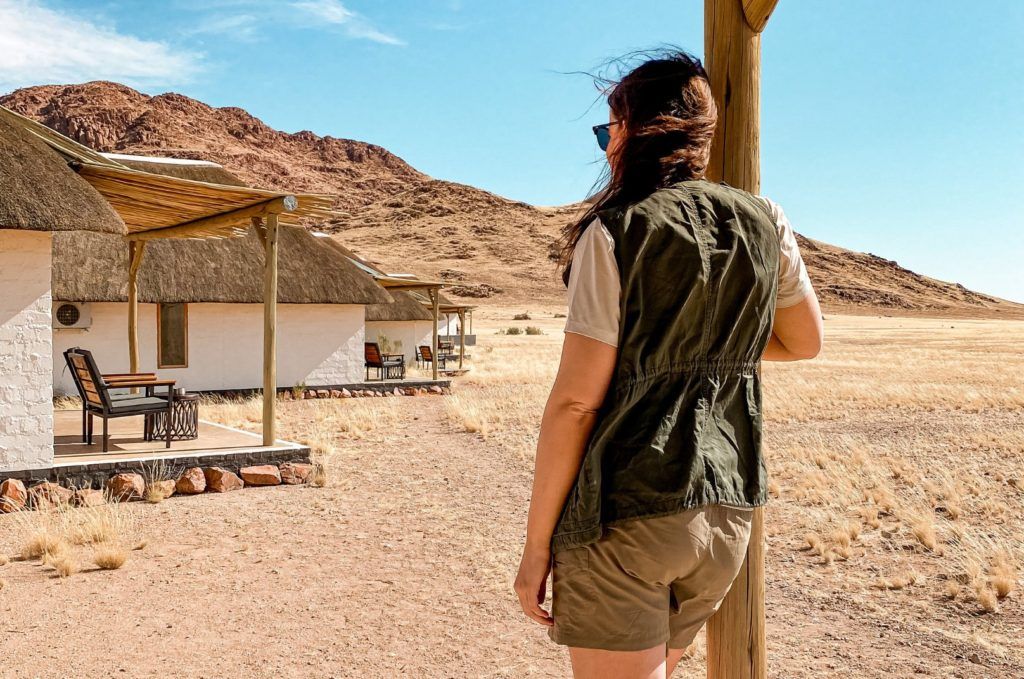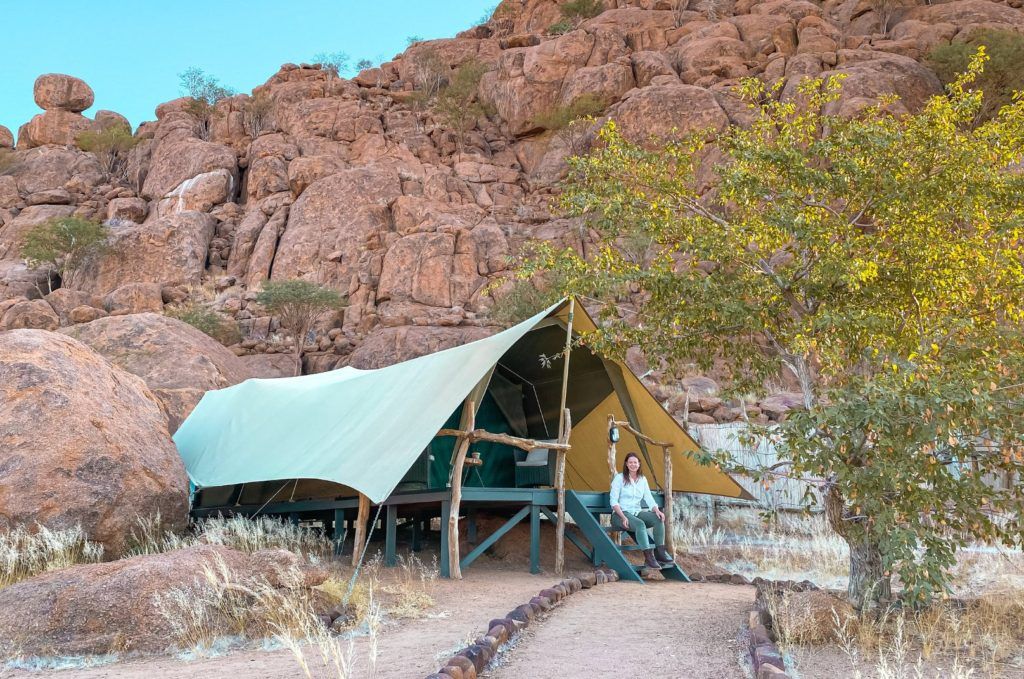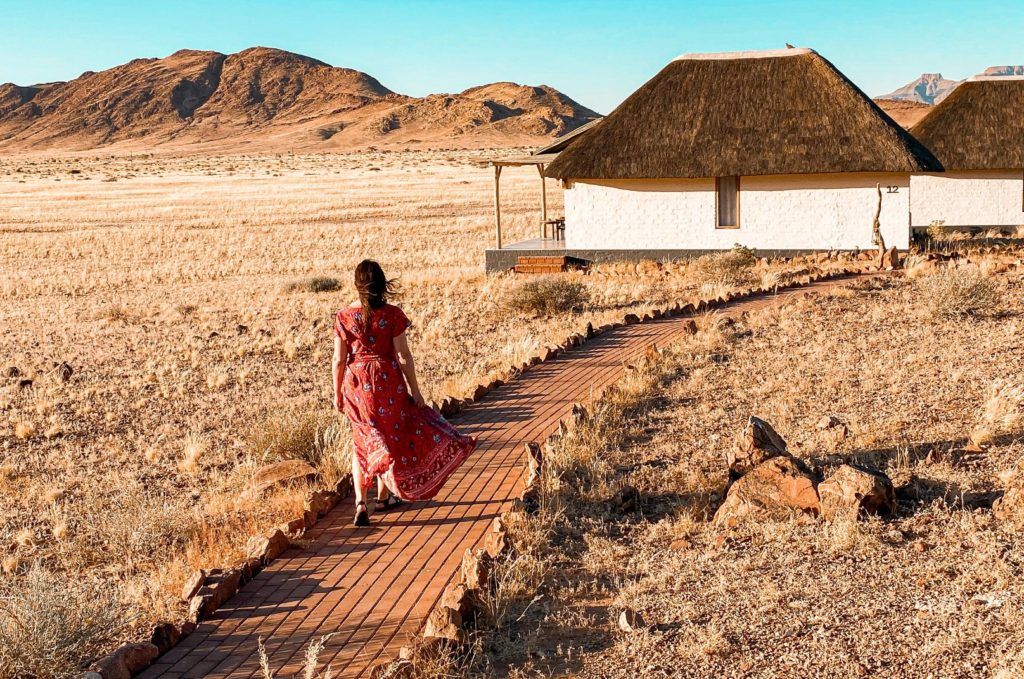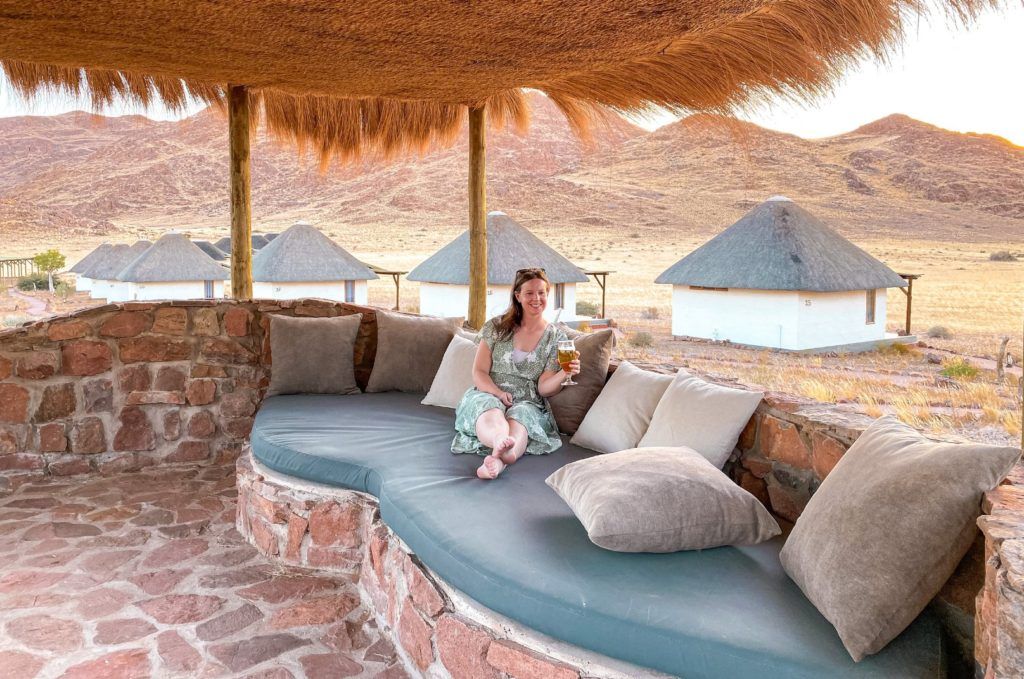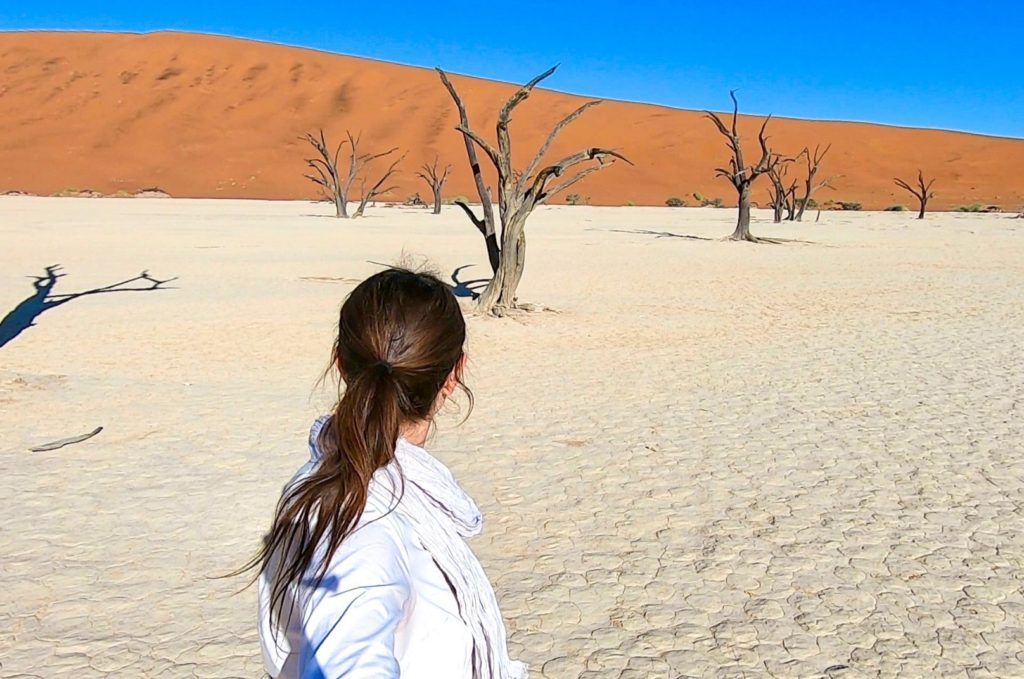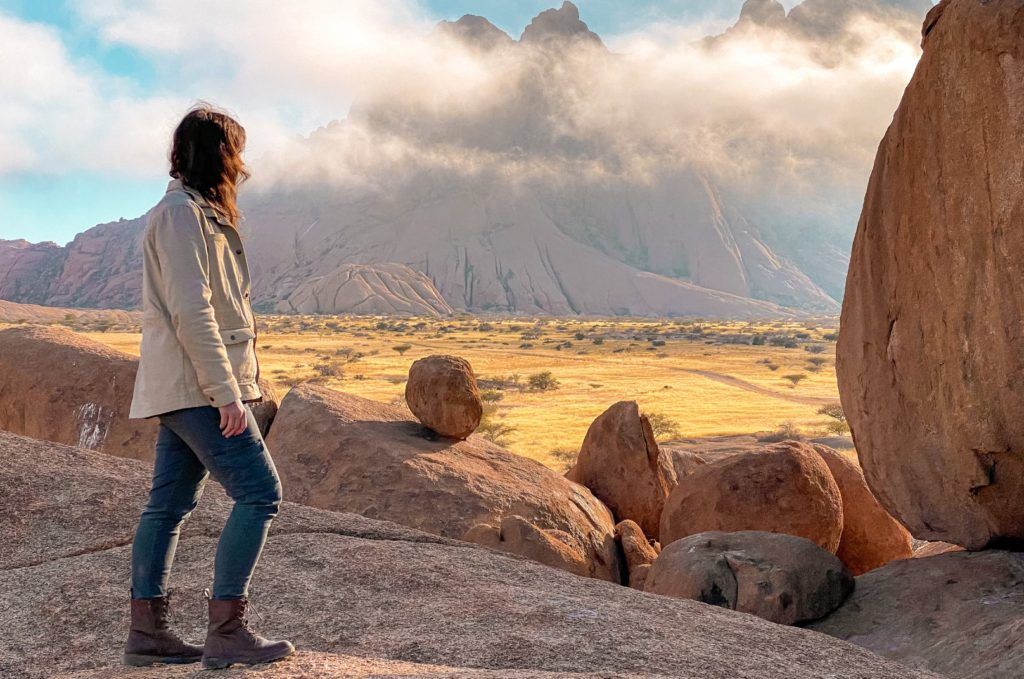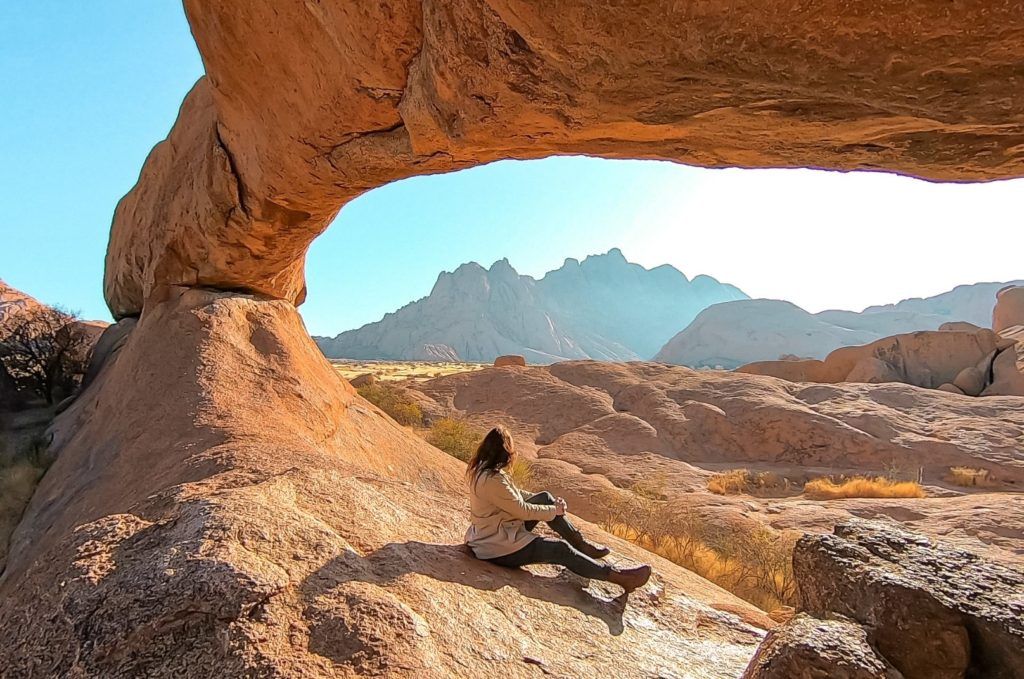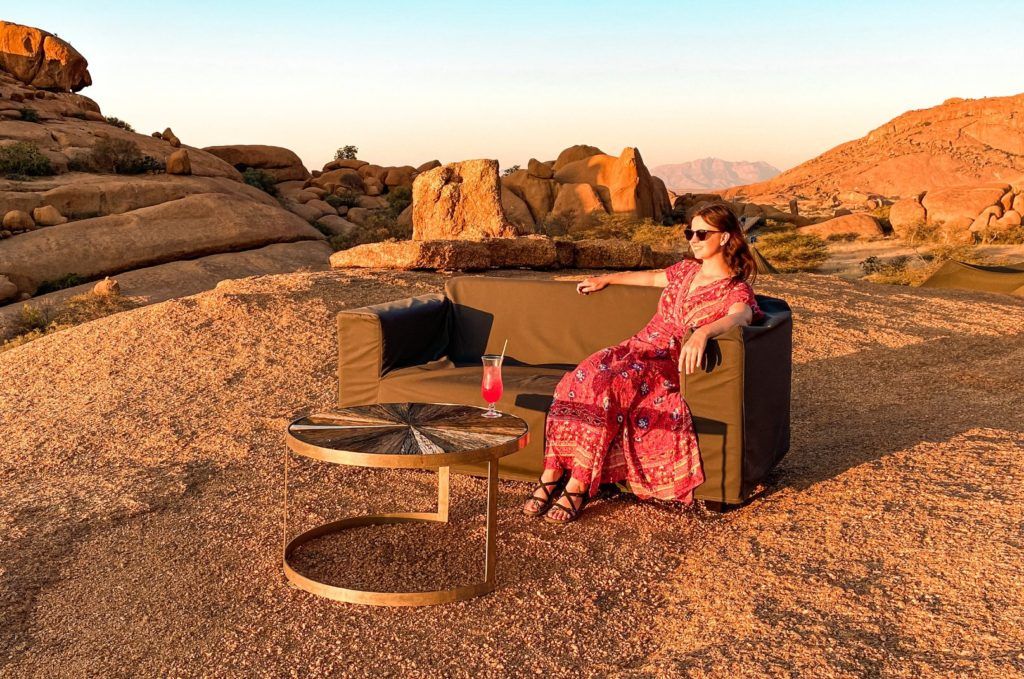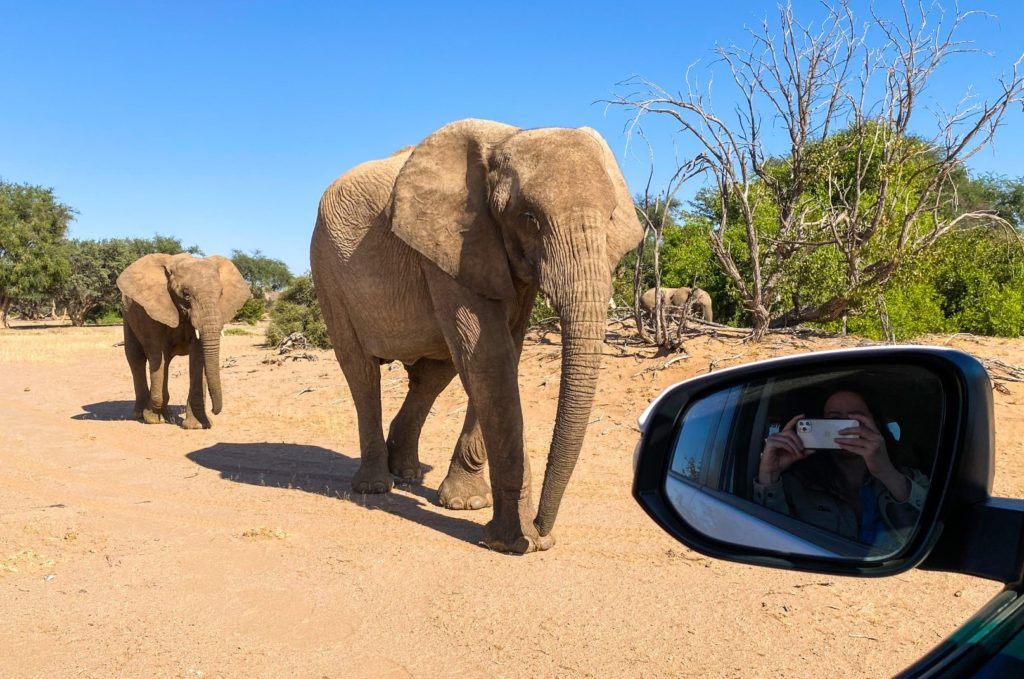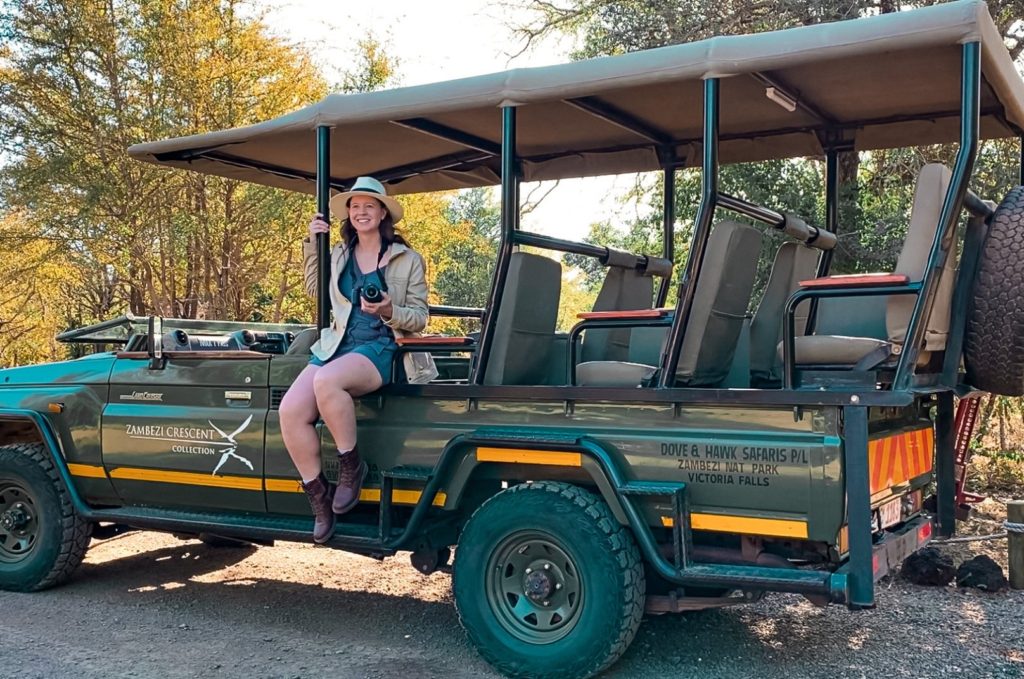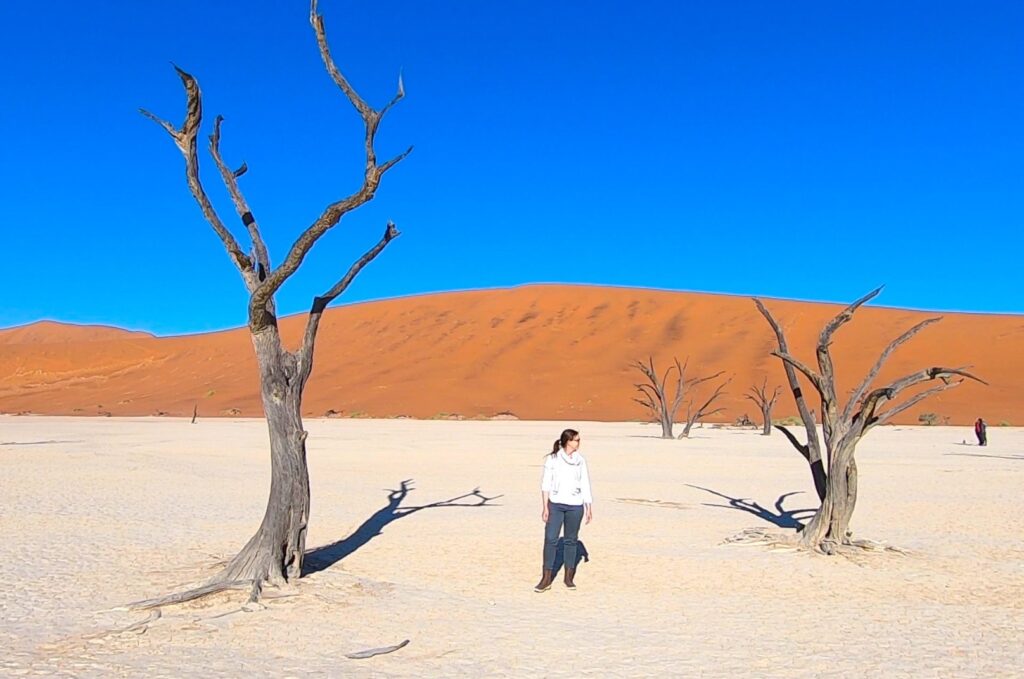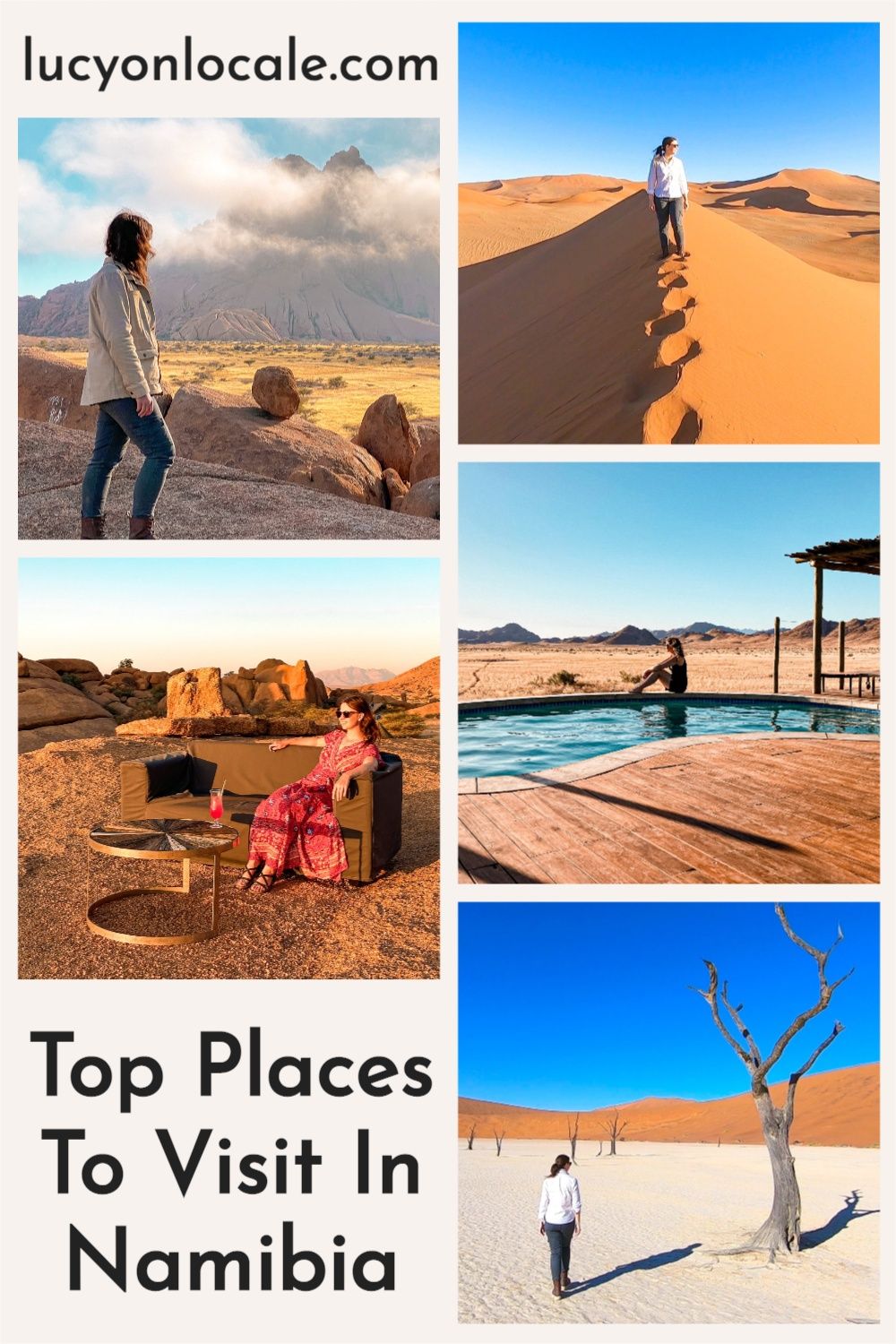
Namibia is one of the best adventure destinations in the world. This country is home to incredible hiking, off-roading, and wildlife viewing. So I’ve rounded up the top places to visit in Namibia.
The Ultimate Namibia Travel Guide
Know Before You Go: Namibia is a large country, and it takes several hours to drive between these destinations. A road trip is the best way to see the country, but plan your itinerary to account for the long driving distances so you have time to enjoy each place.
Here are the best places to visit in Namibia!

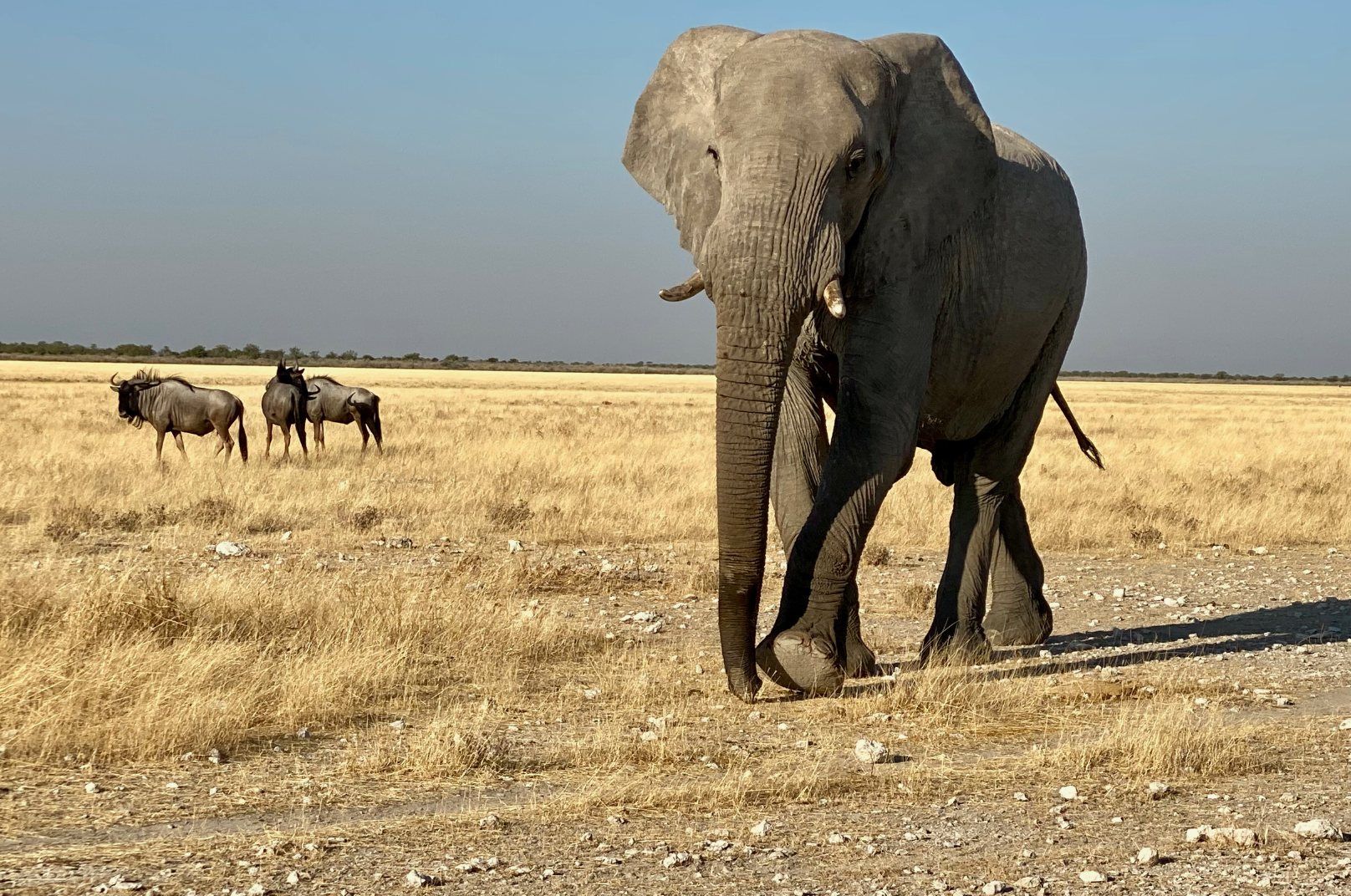
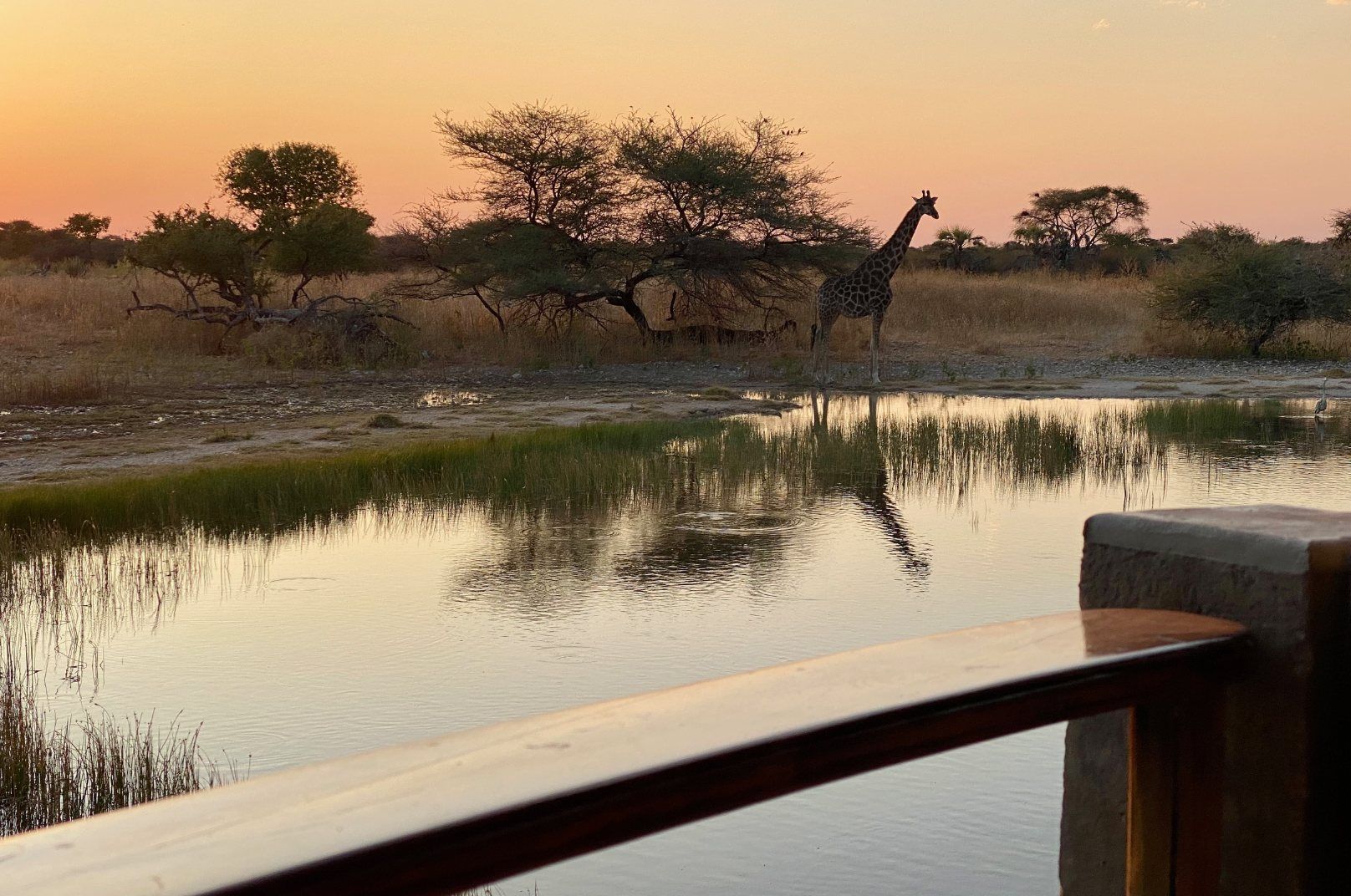
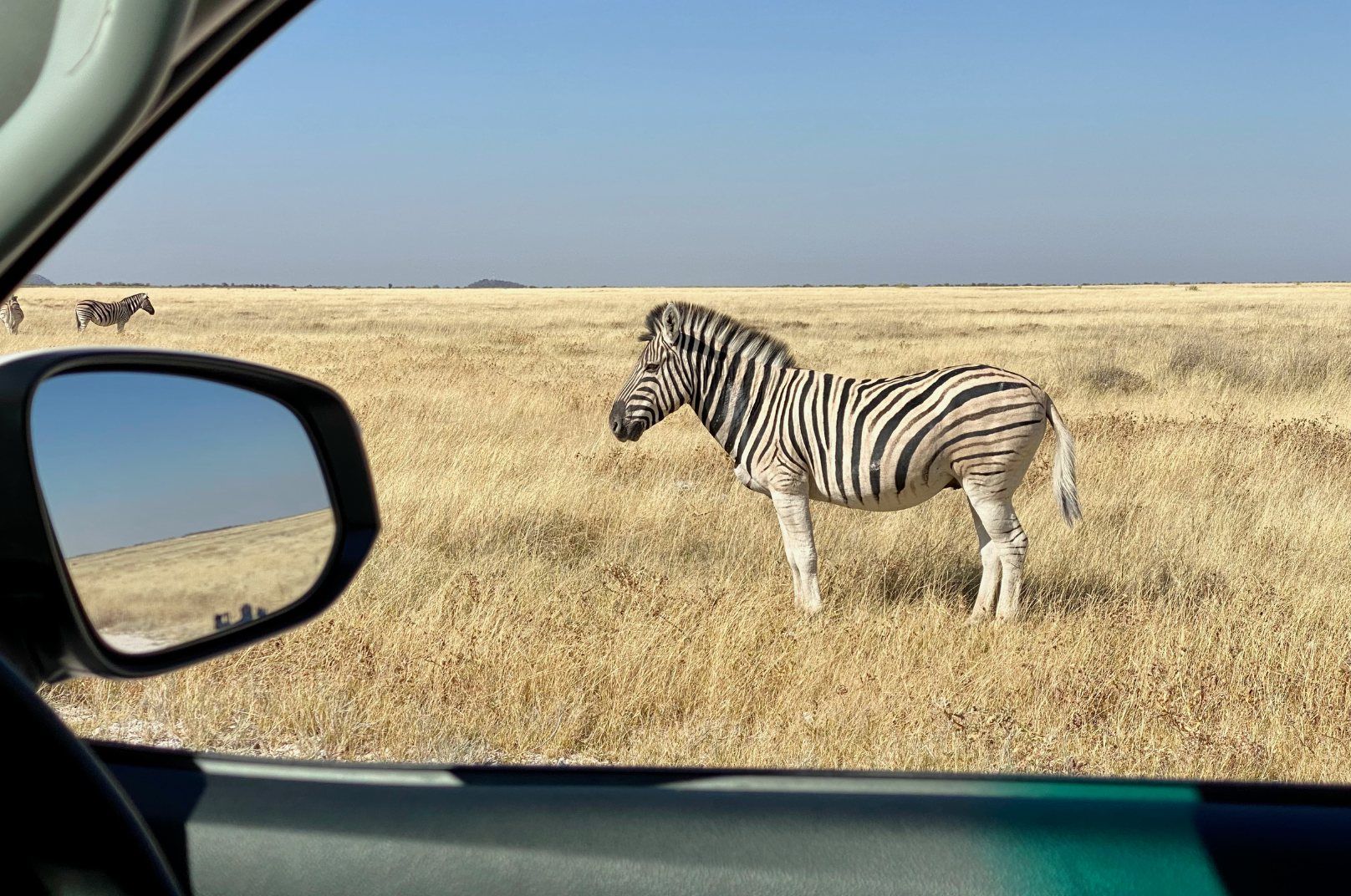
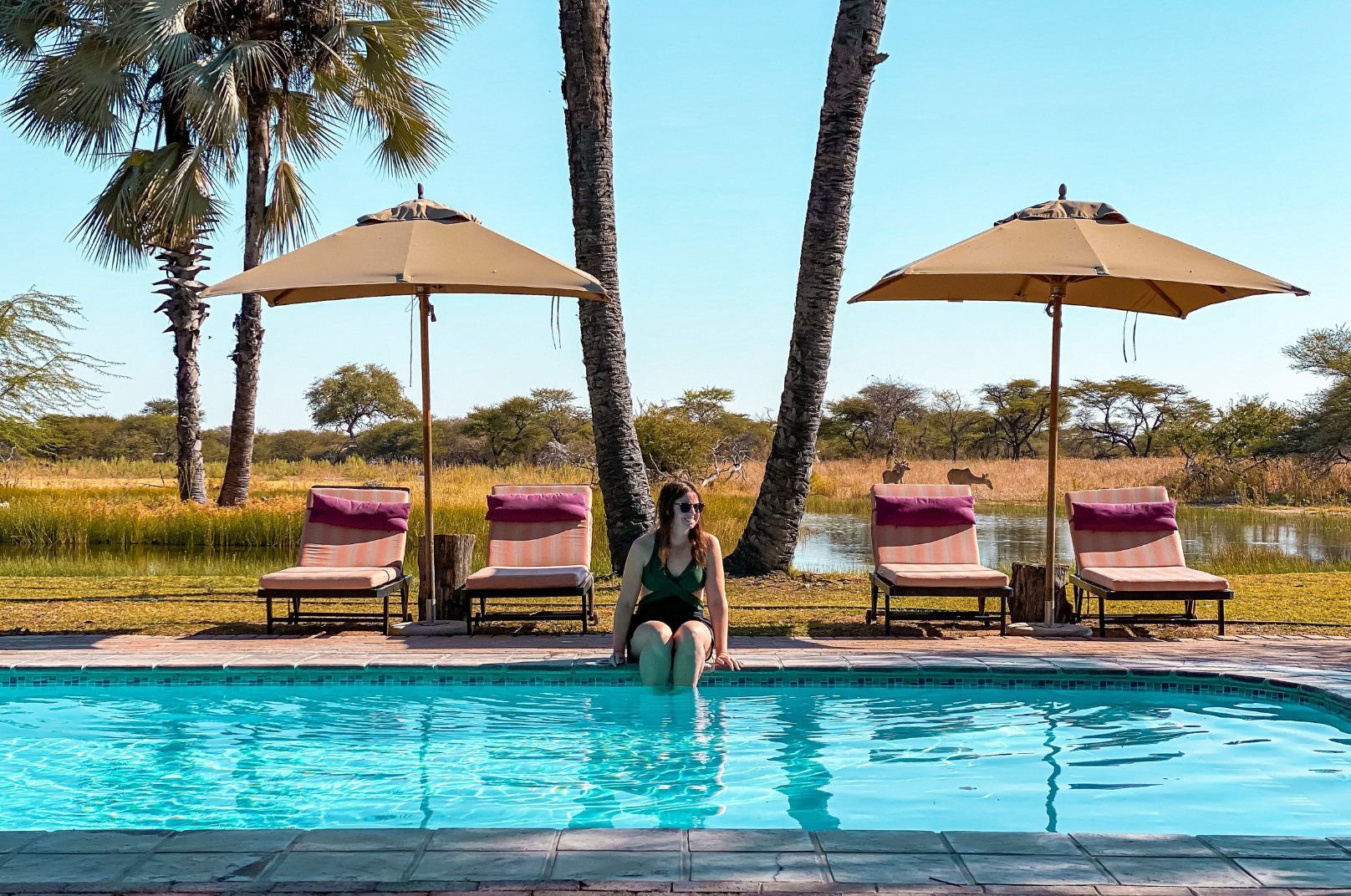
Etosha National Park
Etosha National Park is one of the largest national parks in Africa, and it’s famous for its “Noah’s Ark” game viewing. This national park is entirely desert, which means there is limited water for the wildlife. So during the dry season (May-October), you’ll see hundreds of animals of many different species gathered around the water holes, reminiscent of Noah’s Ark bringing many types of animals together in one place.
Once you enter Etosha National Park, you can only get out of your vehicle at designated visitor centers and restrooms. You cannot exit your vehicle while observing wildlife.
This national park is well-marked, but it’s HUGE, with LOTS of routes. So if you’re doing a self-drive tour, I highly recommend buying a map to study your route before you arrive and to reference inside the park. Make sure you have a full tank of gas and plenty of food and water. If you visit Etosha on game drives from your safari lodge or with a private driver, your guide will take care of this.
You should split your time in Etosha to spend one night on the Western side of the park and at least two nights on the Eastern side of the park. The best safari lodges on the Western end of the park are Mopane Village Lodge Etosha (Budget), Etosha Village (Mid-Range), and Ongava Lodge (Luxury). On the Eastern side, I highly recommend Onguma Forest Camp for its location, stunning property, amenities, incredible food, and on-site watering hole where wildlife comes to you.

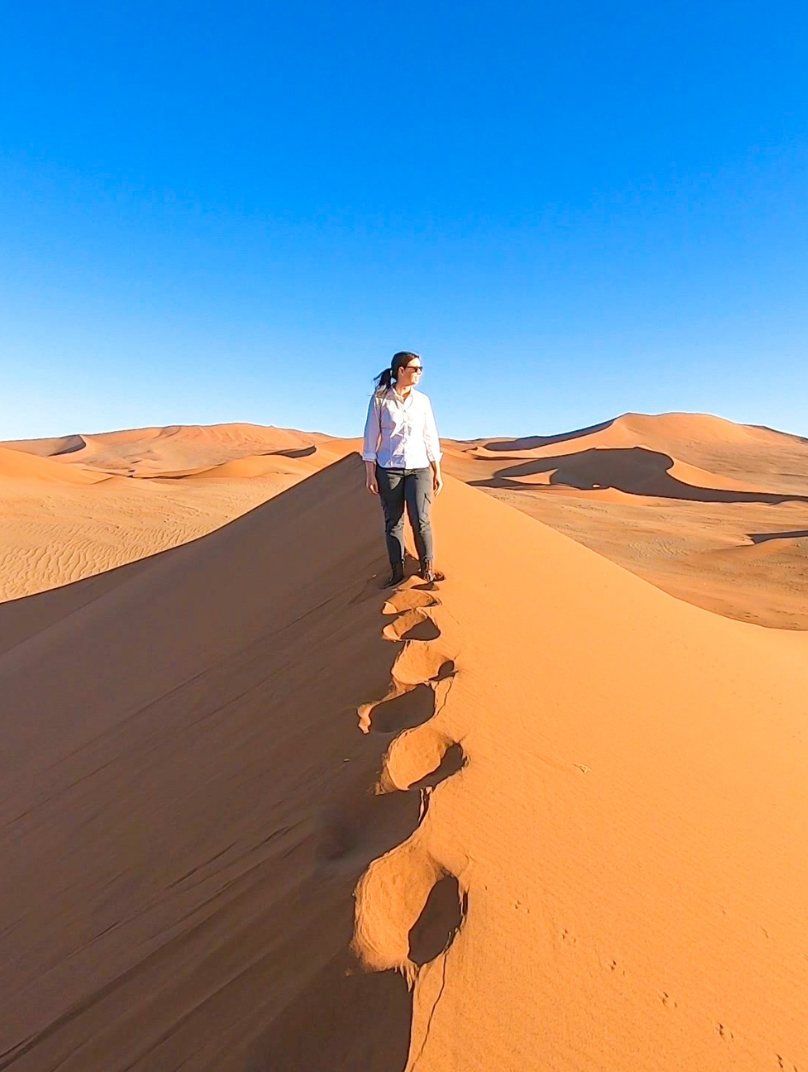
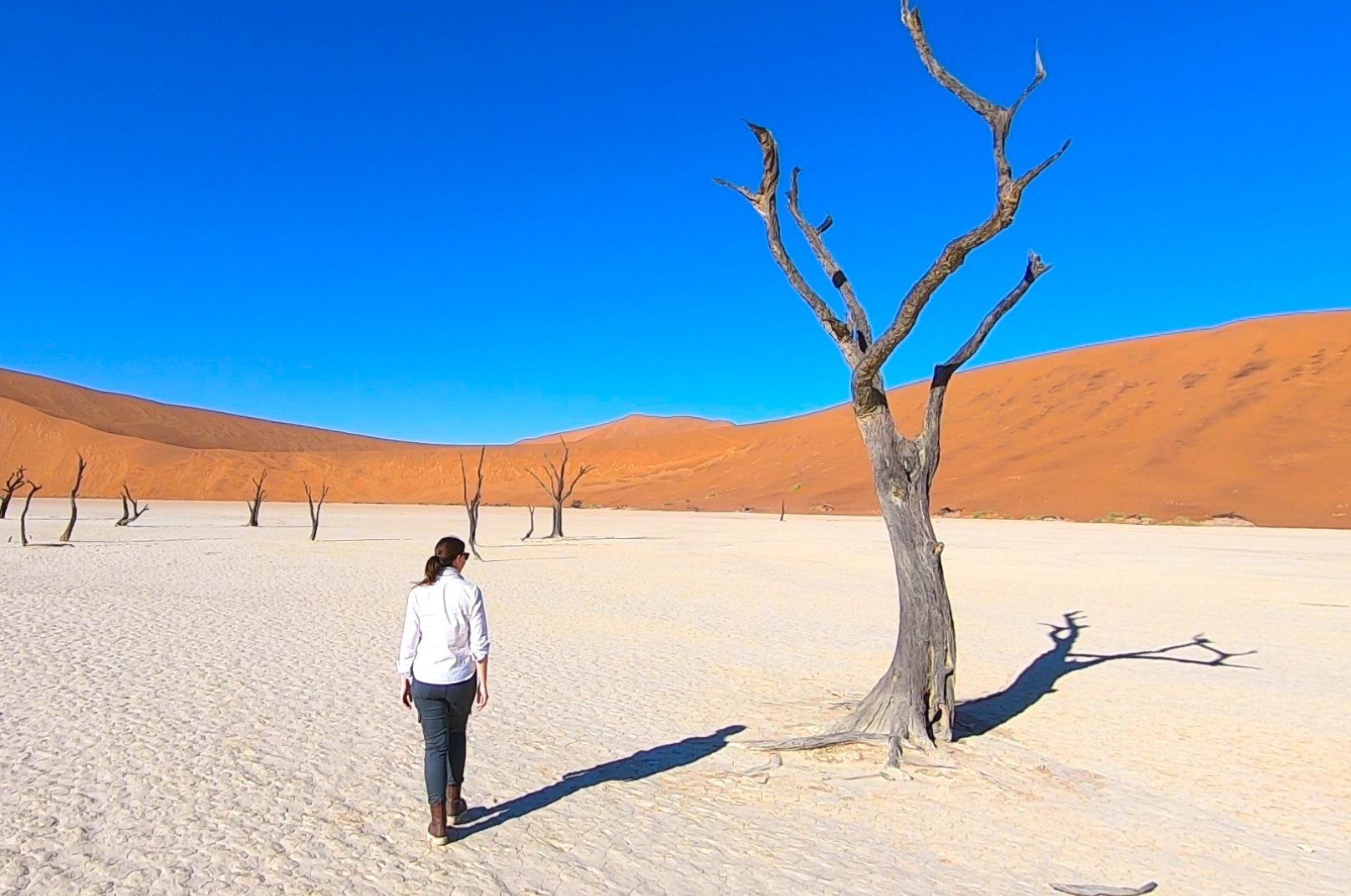
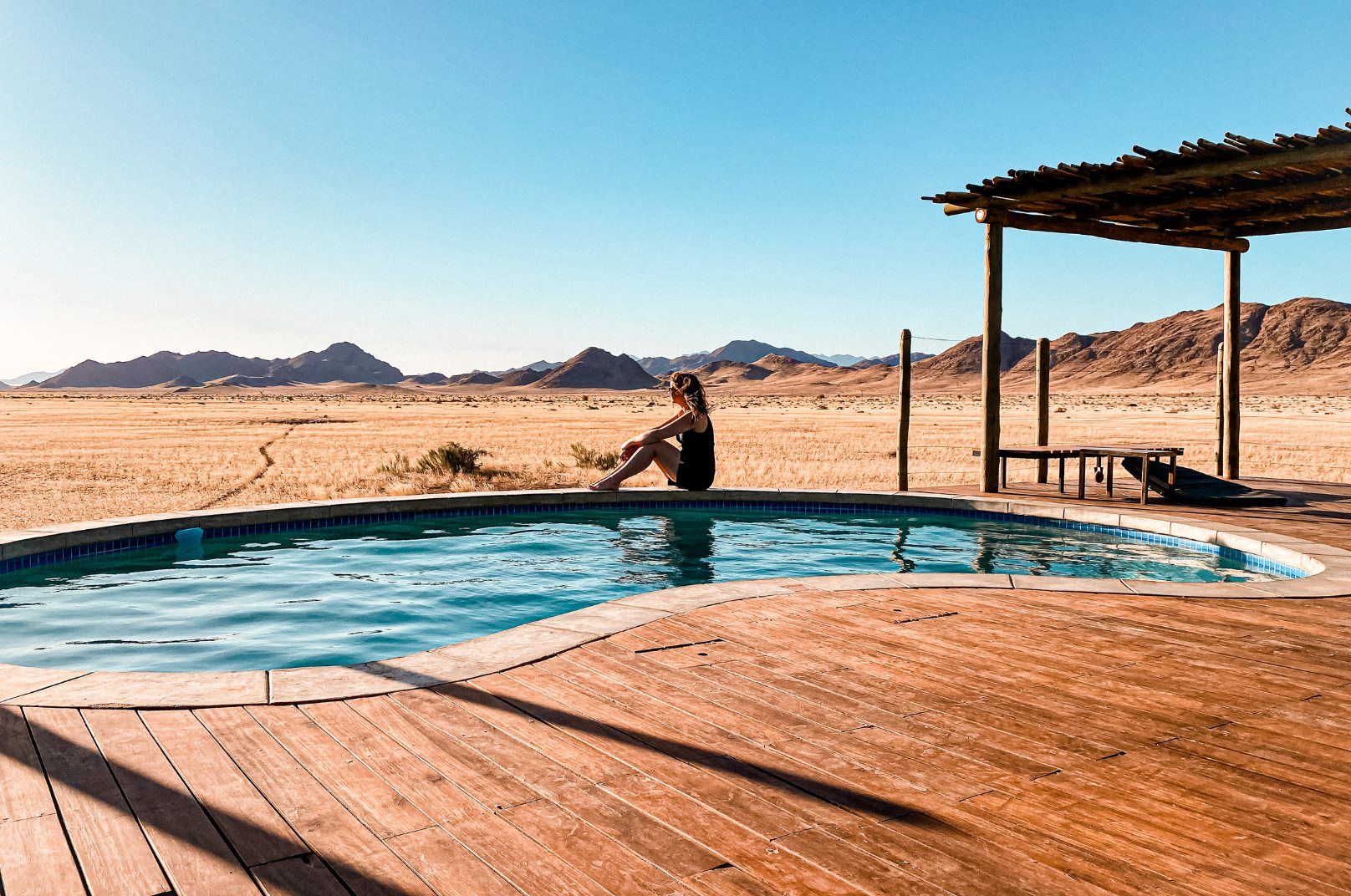
Sossusvlei
Sossusvlei is the most iconic destination in Namibia. This white salt pan surrounded by red dunes is one of the most incredible deserts you’ll ever visit. Plan to spend at least half a day exploring the area.
Big Daddy and Dune 45 are the highest and most famous dunes for climbing, but these are long, strenuous hikes. I recommend hiking to the top of a smaller dune for those on-top-of-the-world shots with the higher dunes surrounding you.
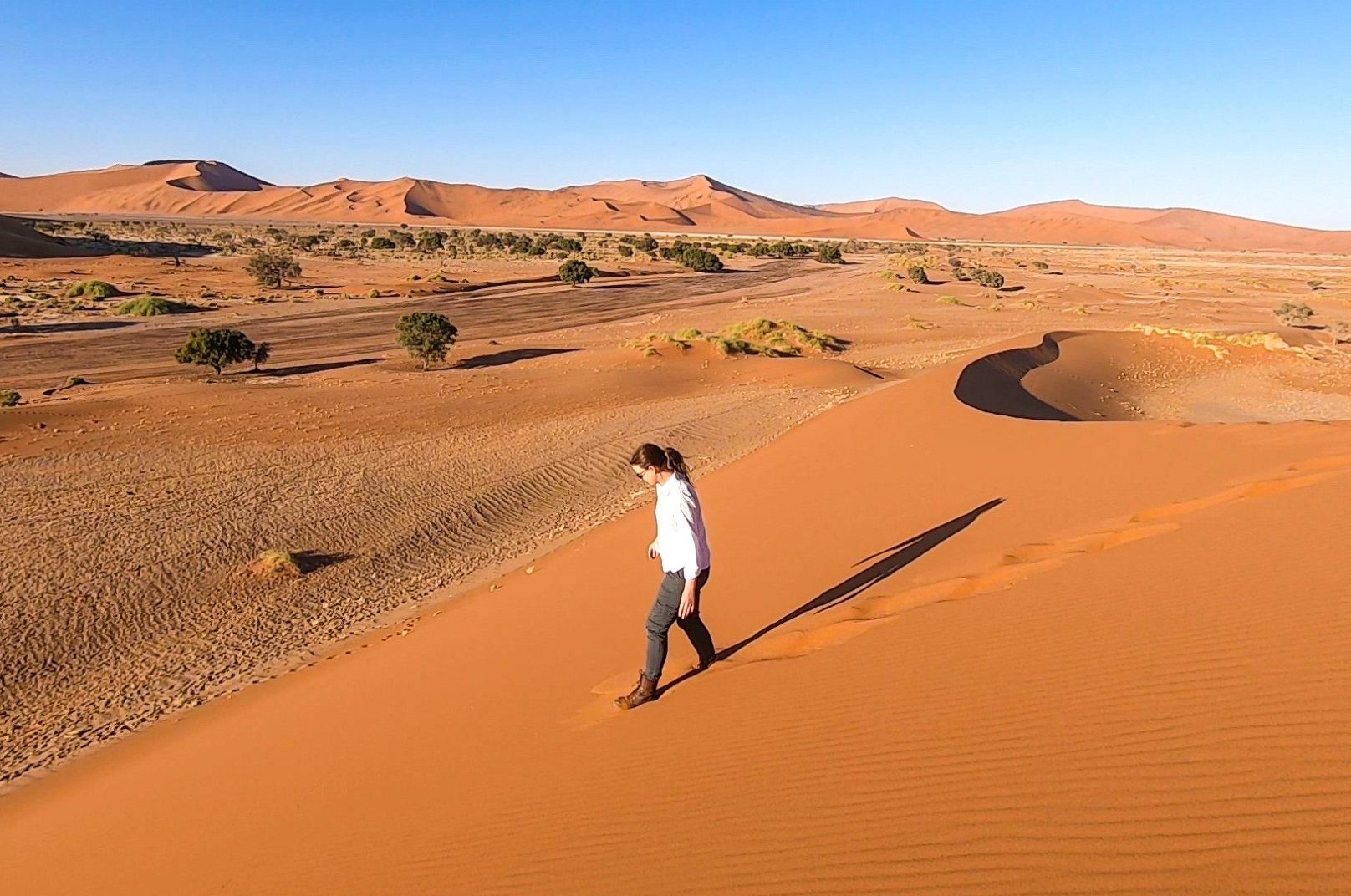
Bring sunglasses, a hat, a scarf, sunscreen, and more water than you think you’ll need, and don’t wear or bring anything you don’t want to get sandy. Morning is the best time to visit the salt pan and dunes because it will be cooler, and the lighting will be better for photos and views.
My favorite accommodation in the area is Desert Homestead Lodge – a stunning property with multiple pools, incredible dining, spacious private bungalows, and an on-site watering hole for wildlife viewing.


Caprivi
The Caprivi Strip is a lush wetlands region that is starkly different from the rest of the desert country. This area of Namibia is bordered by Angola, Zambia, and Botswana and is home to three rivers – the Okavango, Cuando, and Zambezi. This is why the Caprivi area is so lush and verdant.
Caprivi has incredible wildlife viewing because it’s a migration corridor for elephants and other wildlife moving from Botswana and Namibia into Angola, Zambia, and Zimbabwe.
The three national parks in the Caprivi Strip are Bwabwata National Park, Mudumu National Park, and Nkasa Rupara National Park. The best accommodations in the Caprivi are Jackalberry Tented Camp and Chobe Water Villas.


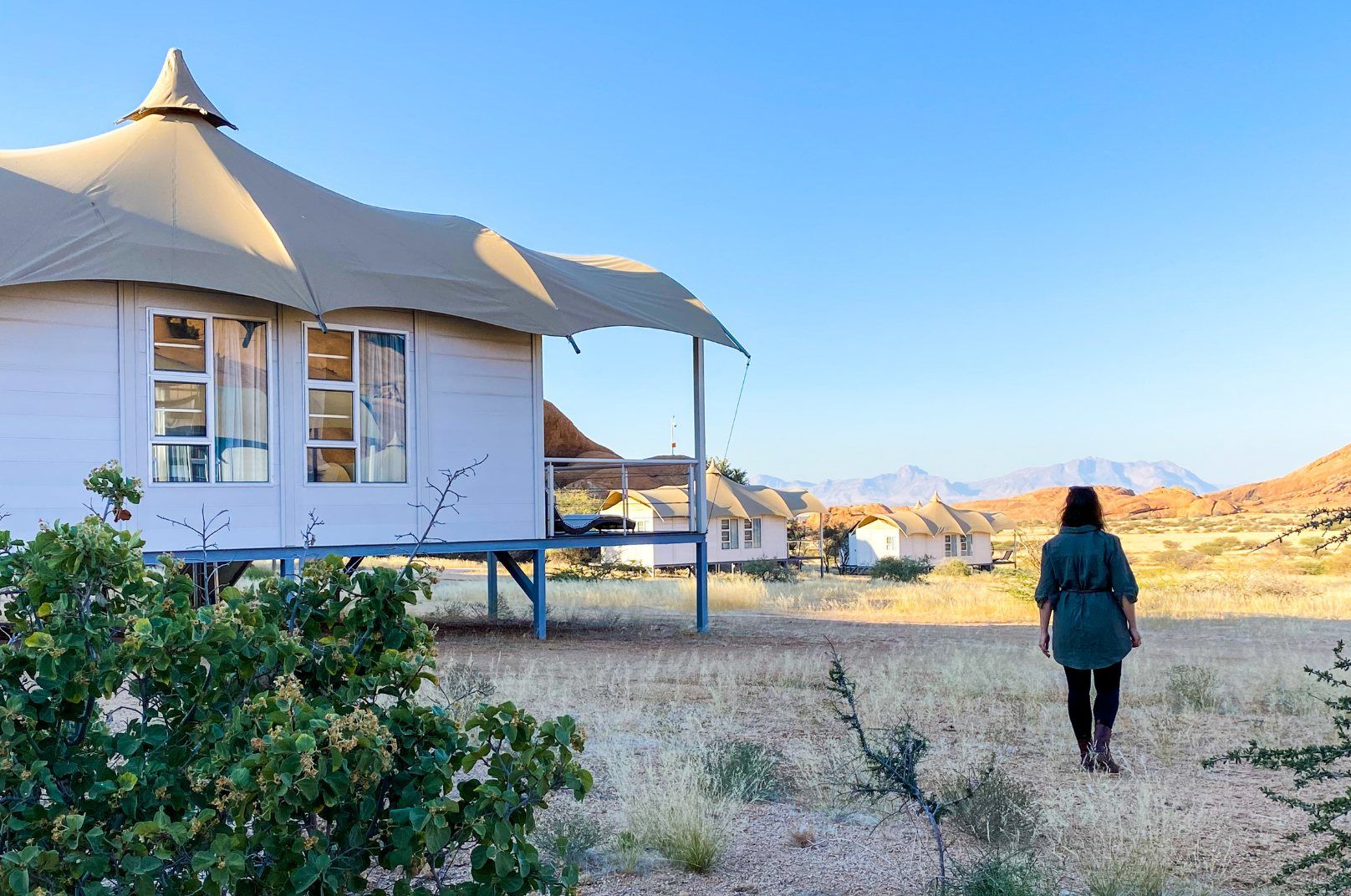

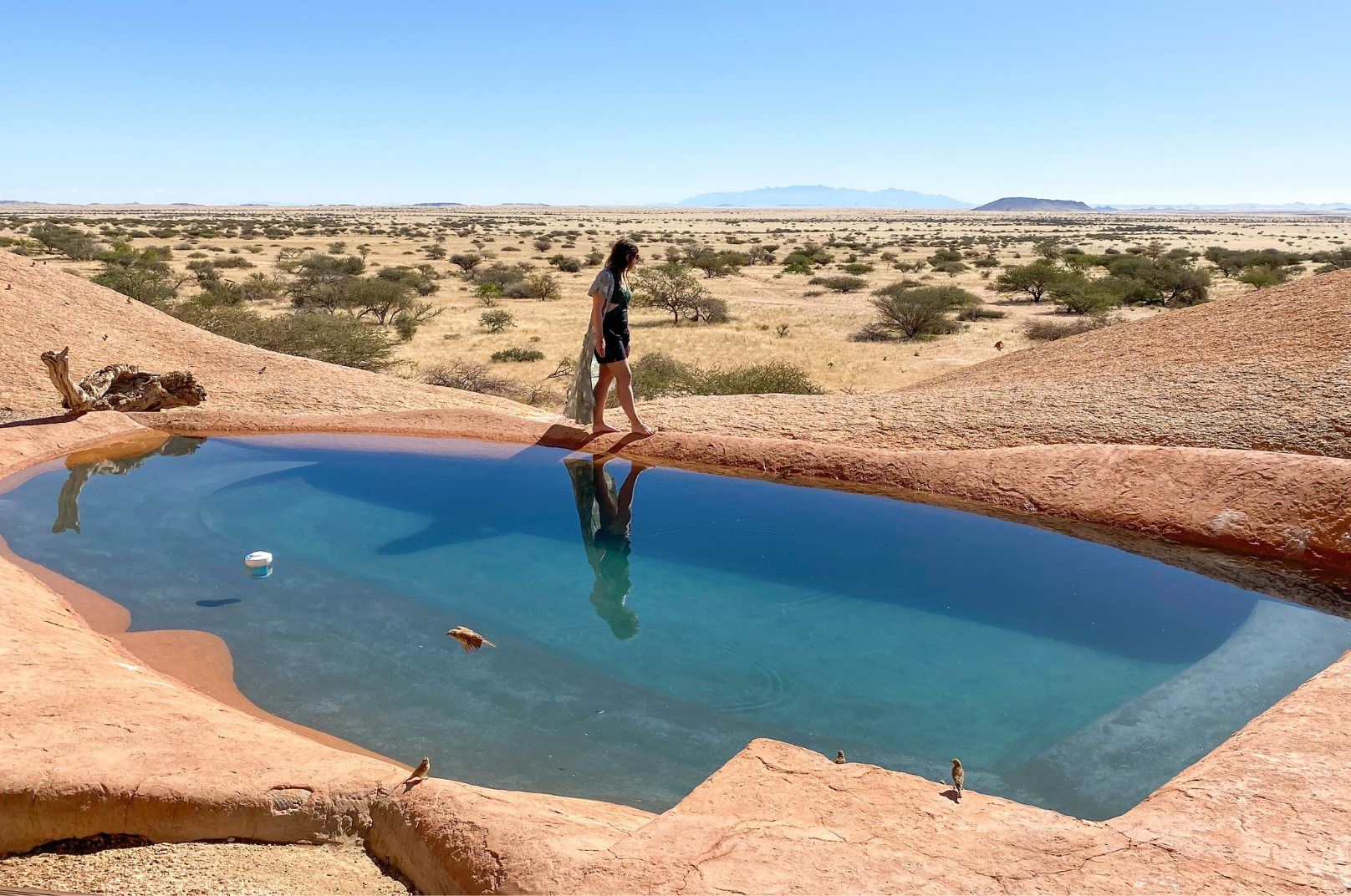
Spitzkoppe
Spitzkoppe
Spitzkoppe is a group of granite peaks called the “Matterhorn of Namibia.” This was one of my favorite places to visit in the country, and it’s a relatively off-the-beaten-path destination, so it’s perfect for escaping the crowds.
This area is a hiker and rock climber’s paradise. There are some designated climbing and hiking routes, but mostly you just free-wander and explore.
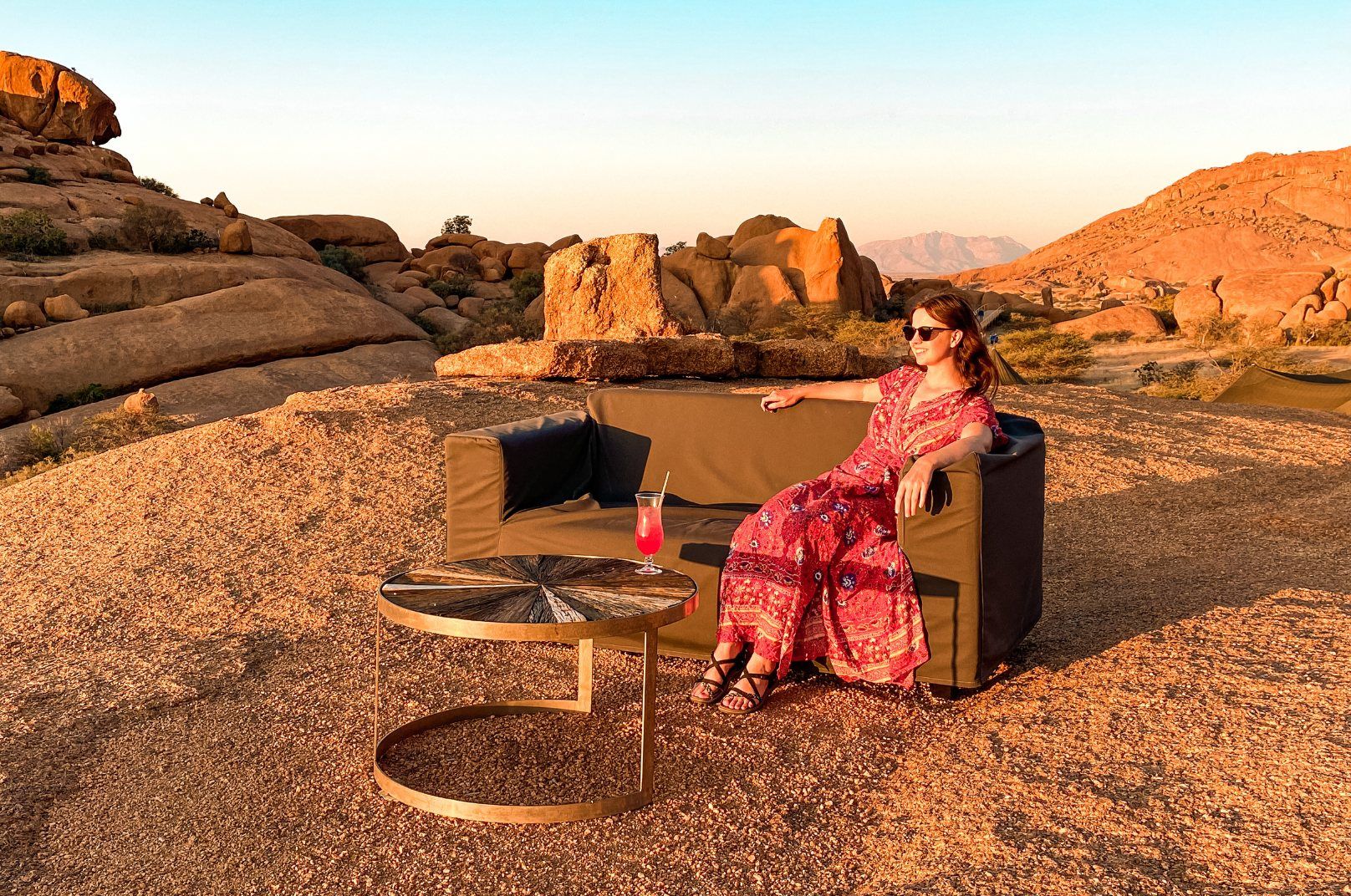
I highly recommend doing a Bushman’s Paradise Tour. This is where a local will guide you to ancient, archaeological cave paintings. This is a free activity, but it has to be done with a guide, and you should tip your guide N$50 per person. You should also visit the famous Spitzkoppe Arch.
You can camp at Spitzkoppe or stay at the best (and only) accommodation in the area – the dreamy Spitzkoppen Lodge.

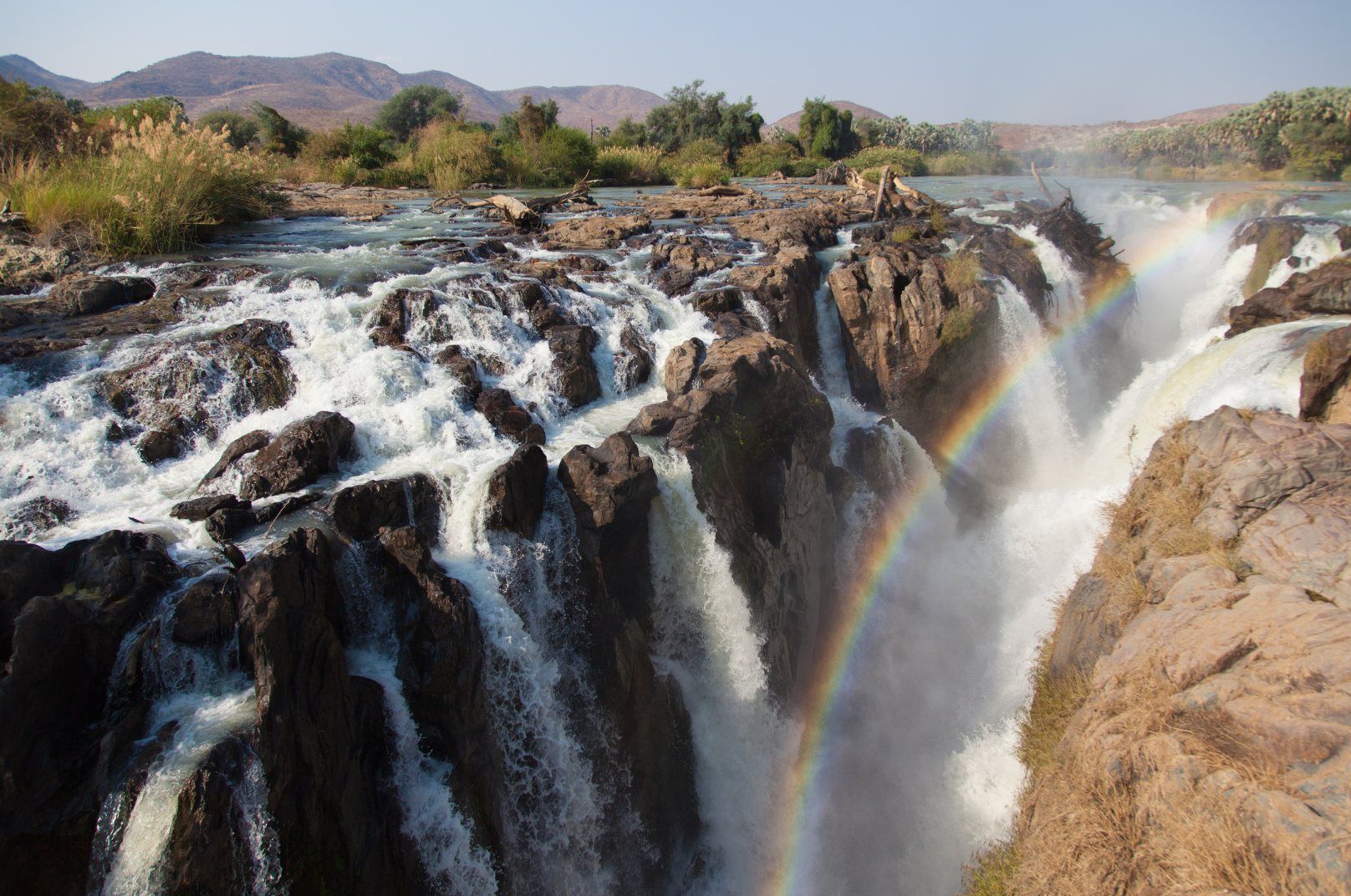
Epupa Falls
This stunning waterfall is in a remote region of Northern Namibia that few people ever visit. The best way to get to this natural wonder is to fly to and from Epupa Camp, which is one of the best accommodations in the area.
In addition to walking above the falls, this area is famous for its boating and off-roading. So your safari lodge can arrange guided excursions.

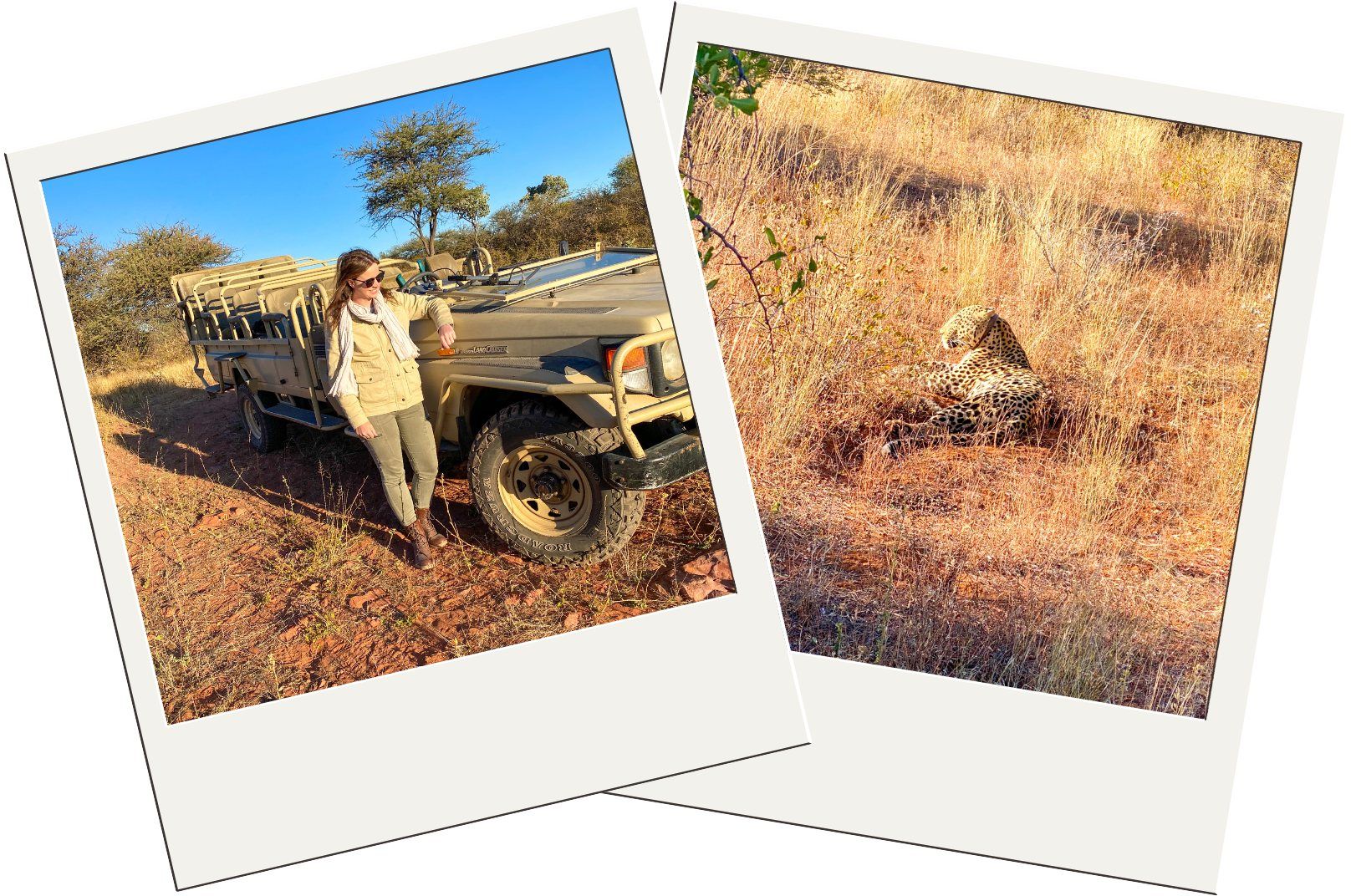
Okonjima Nature Reserve
The Okonjima Nature Reserve is famous for its leopards, brown hyenas, pangolins, and The AfriCat Foundation, an organization that protects large cats. Visiting this nature reserve directly supports the critical work being done by The AfriCat Foundation.
Staying at one of the stunning on-site lodges – Okonjima Plains Camp and Okonjima Bush Camp – is also a way to support The AfriCat Foundation’s conservation work.
Your game drives from the Okonjima Camps will focus on leopard sightings, but you’ll see many types of wildlife. I also highly recommend doing a walking safari to search for the rare pangolins.

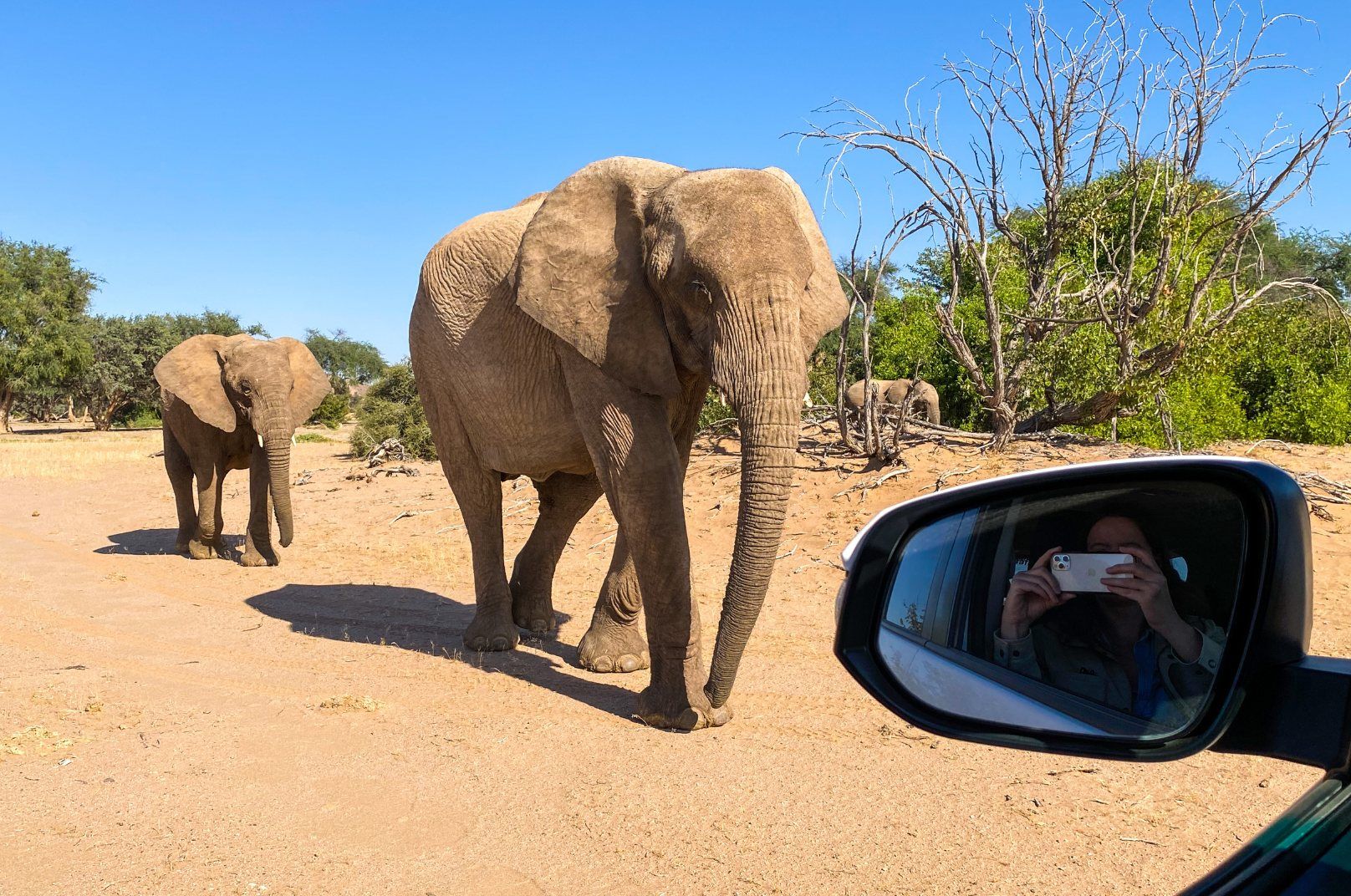
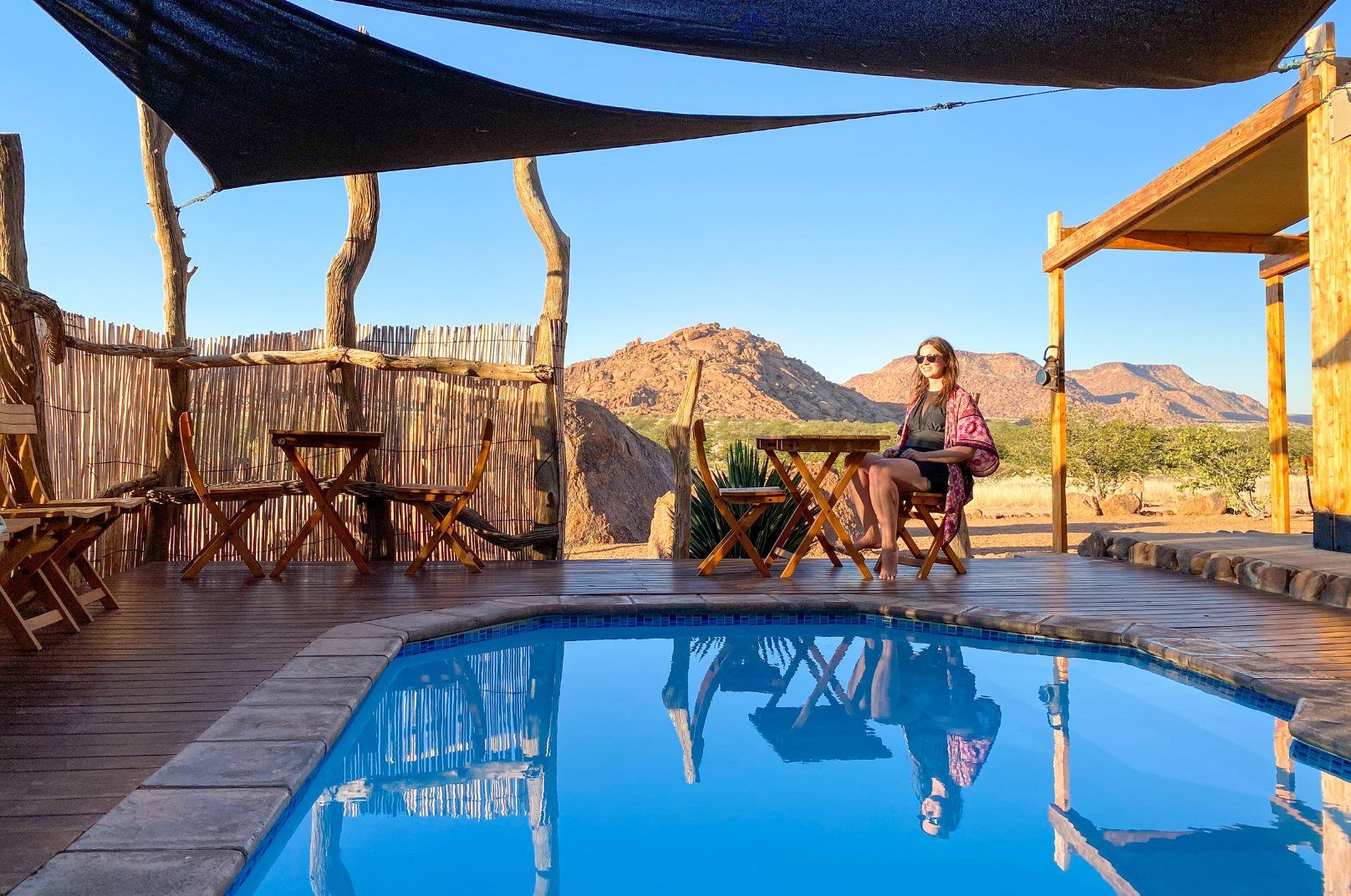
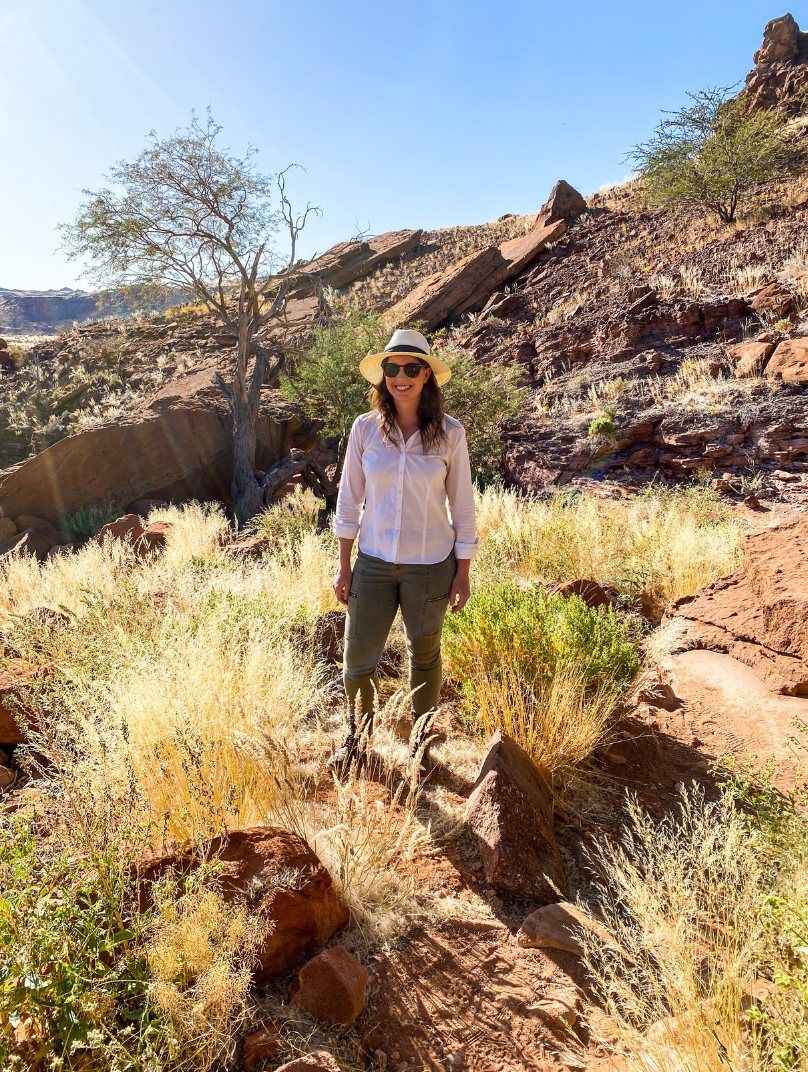
Twyfelfontein
Twyfelfontein
Twyfelfontein is an area in north-western Namibia that’s home to one of Africa’s largest concentrations of petroglyphs. Seeing these ancient engravings is a must-do activity when you’re here. When you visit this UNESCO World Heritage Site, you’ll buy a ticket (N$80 per person) at the visitor center. Then a local guide will walk you through the engravings.
The engravings walk is a leisurely loop that lasts about an hour, and the light is best in the afternoon to see the petroglyphs. You’ll also want to tip your guide at least N$50 per person.
If you’re interested in more cultural activities, you will enjoy the Damara Living Museum. You’ll pay an entrance fee, then please buy a couple of items from their store and/or leave a tip. The other must-do activity in Twyfelfontein is searching for the desert-adapted elephant. Your safari guide will take you off-roading down dried riverbeds in search of these incredible animals.
The best accommodations in Twyfelfontein are Twyfelfontein Country Lodge (mid-range) and Twyfelfontein Adventure Camp (glamping).

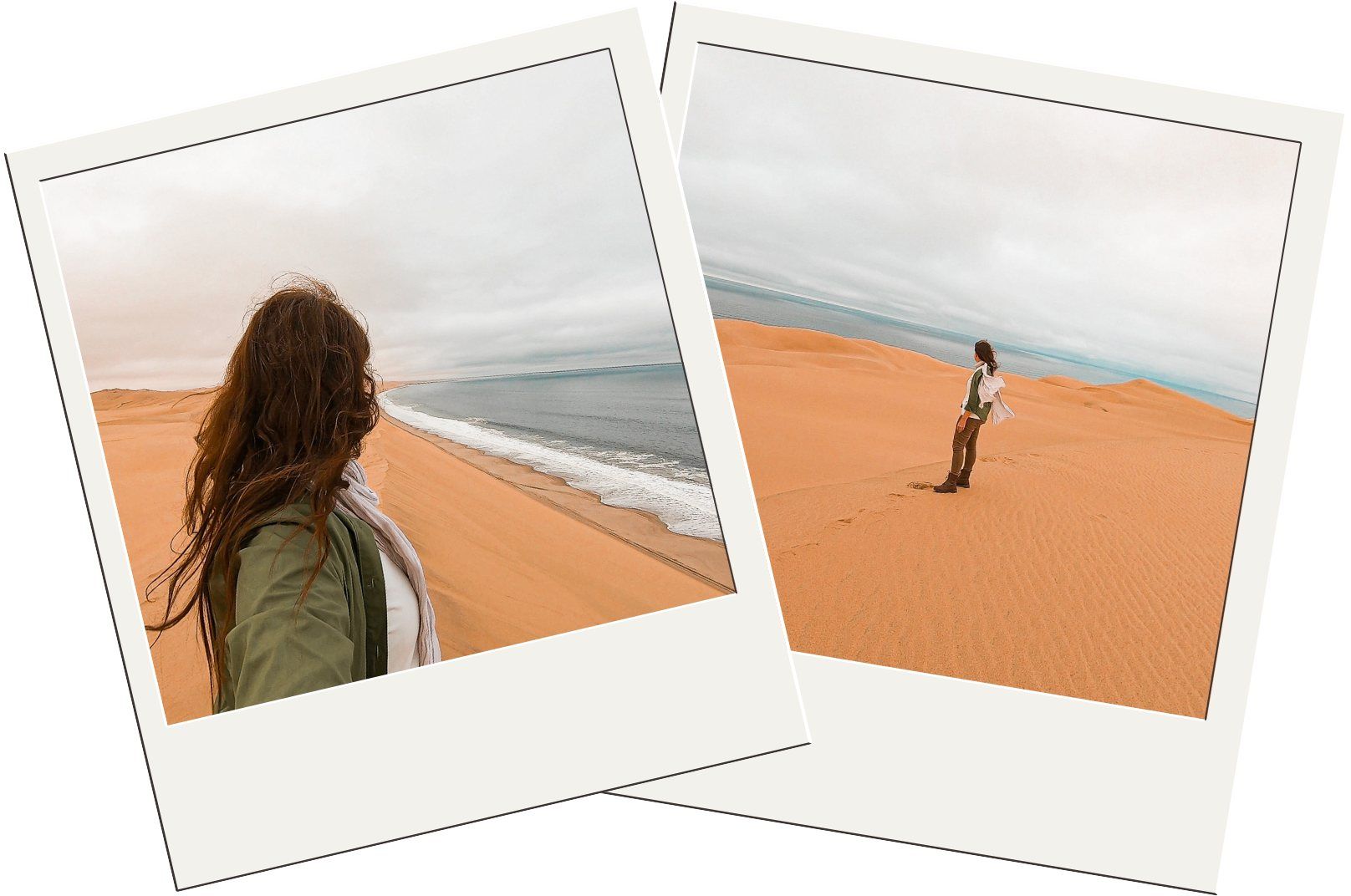
Walvis Bay and Swakopmund
Walvis Bay and Swakopmund
Swakopmund and Walvis Bay are neighboring port towns known for their surfing, beaches, laid-back “vibe,” German architecture, and massive dunes. You only need a day in these two towns – half a day to do a 4×4 tour of Where The Dunes Meet The Sea and half a day to lounge on the beach, shop, and eat in Swakopmund.
The best hotels in the area are Hansa Hotel Swakopmund, Bay View Resort Namibia, and The Delight Swakopmund.

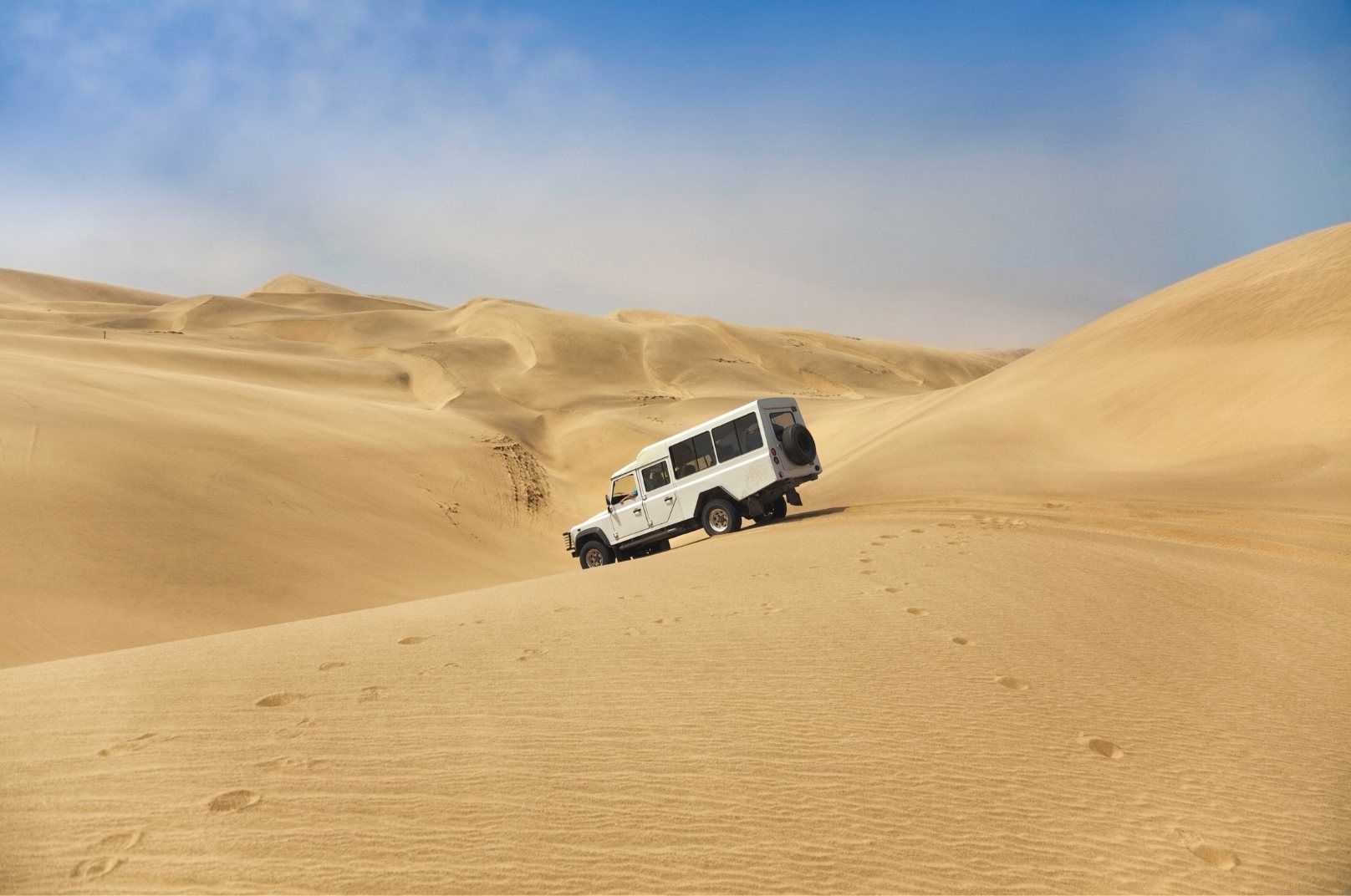
Skeleton Coast
The Skeleton Coast is a remote section of Namibia’s northern coastline that’s often referred to as the “end of the Earth.” Here, you’ll see one of the most beautiful natural juxtapositions in the world – massive sand dunes dropping into the ocean.
If you’re lucky, you’ll see lions stalking seals and elephants wading into the sea. You can also explore lots of shipwrecks because the Skeleton Coast is one of the largest boat graveyards in the world.
The Skeleton Coast is virtually uninhabited, and you can go an entire day without seeing another vehicle. If you want to spend the night in the area, opt for Shipwreck Lodge. If you want to visit the Skeleton Coast as a day trip, I recommend a scenic flight that skims low across the sea and sand and makes at least one stop along the way.

Shop My Safari Essentials

What are your favorite places to visit in Namibia? Share with us in the comments!

For Planning The Rest Of Your Namibia Trip

Recommended Tours in Namibia

Frequently Asked Questions
What is the most visited place in Namibia?
Etosha National Park is the top place to visit in Namibia. Namibia is home to deserts, mountains, incredible safari lodges, national parks, dreamy beach towns, and some of the best wildlife viewing in Sub-Saharan Africa. So here are more most-visit places in Namibia:
1.Sossusvlei
2. The Caprivi Strip
3. Spitzkoppe
4. Epupa Falls
5. Okonjima Nature Reserve
6. Twyfelfontein
7. Swakopmund
8. Walvis Bay
9. Skeleton Coast
Is Namibia worth visiting?
Yes!
Namibia is home to deserts, mountains, incredible safari lodges, national parks, dreamy beach towns, and some of the best wildlife viewing in Sub-Saharan Africa. So whether you’re climbing sand dunes in Sossusvlei or tracking rhinos in Etosha National Park, this Namibia luxury safari guide has everything you need to plan an epic trip!
Fun Fact: Namibia has one of the lowest population densities in the world, which means this is one of the best destinations to escape the crowds.
When To Go:
Namibia is a desert country – one of the driest places in Sub-Saharan Africa. July – October are the driest months of the year and the peak travel season. Wildlife will gather by the hundreds around water holes, meaning these months have some of the best game viewings anywhere in Africa. These months have the highest prices and crowds, so book your lodge and tours as far in advance as possible. In July and August, daytime temperatures average in the 60s and 70s, and nighttime temperatures can drop below freezing, so bring layers. September and October nights are warmer, but you’ll still want a jacket.
May and June are the shoulder months. The rains will have stopped, the landscape will be lush, and wildlife will be easily visible at waterholes (though not as high a concentration as in July – October). Travel costs will be less during these months, and the safari lodges and destinations won’t be overrun with tourists. Daytime temperatures range from the 60s to 80s, with nighttime temperatures falling below freezing in June, so bring layers for the mornings and evenings.
November, February, and March are the rainy and off-season months. It will be wet and humid, and wildlife will be hard to see because they won’t need to gather at watering holes. You can score some great accommodation deals during these months, though, and it can feel like you have the entire country to yourself.
December, January, and April are the best months for bird watching. These are the months directly after the rainy months, when the weather will be drier, the skies clearer, and the feeding conditions are ideal for water birds. These months have drastic temperature changes from night to day, so bring shorts, pants, short-sleeve shirts, and jackets.
What attract tourists to Namibia?
Etosha National Park is the top place to visit in Namibia. Namibia is home to deserts, mountains, incredible safari lodges, national parks, dreamy beach towns, and some of the best wildlife viewing in Sub-Saharan Africa. So here are more most-visit places in Namibia:
1.Sossusvlei
2. The Caprivi Strip
3. Spitzkoppe
4. Epupa Falls
5. Okonjima Nature Reserve
6. Twyfelfontein
7. Swakopmund
8. Walvis Bay
9. Skeleton Coast
What places in Namibia would a newcomer find interesting?
Etosha National Park is the top place to visit in Namibia. Namibia is home to deserts, mountains, incredible safari lodges, national parks, dreamy beach towns, and some of the best wildlife viewing in Sub-Saharan Africa. So here are more most-visit places in Namibia:
1.Sossusvlei
2. The Caprivi Strip
3. Spitzkoppe
4. Epupa Falls
5. Okonjima Nature Reserve
6. Twyfelfontein
7. Swakopmund
8. Walvis Bay
9. Skeleton Coast
Which places do tourist visit?
Etosha National Park is the top place to visit in Namibia. Namibia is home to deserts, mountains, incredible safari lodges, national parks, dreamy beach towns, and some of the best wildlife viewing in Sub-Saharan Africa. So here are more most-visit places in Namibia:
1.Sossusvlei
2. The Caprivi Strip
3. Spitzkoppe
4. Epupa Falls
5. Okonjima Nature Reserve
6. Twyfelfontein
7. Swakopmund
8. Walvis Bay
9. Skeleton Coast
What can you do in Namibia for a week?
If you only have a week in Namibia, I recommend spending two nights in Sossusvlei, two nights in Spitzkoppe, and three nights in Etosha National Park.
When To Go:
Namibia is a desert country – one of the driest places in Sub-Saharan Africa. July – October are the driest months of the year and the peak travel season. Wildlife will gather by the hundreds around water holes, meaning these months have some of the best game viewings anywhere in Africa. These months have the highest prices and crowds, so book your lodge and tours as far in advance as possible. In July and August, daytime temperatures average in the 60s and 70s, and nighttime temperatures can drop below freezing, so bring layers. September and October nights are warmer, but you’ll still want a jacket.
May and June are the shoulder months. The rains will have stopped, the landscape will be lush, and wildlife will be easily visible at waterholes (though not as high a concentration as in July – October). Travel costs will be less during these months, and the safari lodges and destinations won’t be overrun with tourists. Daytime temperatures range from the 60s to 80s, with nighttime temperatures falling below freezing in June, so bring layers for the mornings and evenings.
November, February, and March are the rainy and off-season months. It will be wet and humid, and wildlife will be hard to see because they won’t need to gather at watering holes. You can score some great accommodation deals during these months, though, and it can feel like you have the entire country to yourself.
December, January, and April are the best months for bird watching. These are the months directly after the rainy months, when the weather will be drier, the skies clearer, and the feeding conditions are ideal for water birds. These months have drastic temperature changes from night to day, so bring shorts, pants, short-sleeve shirts, and jackets.
How many days do you need in Namibia?
If you only have a week in Namibia, I recommend spending two nights in Sossusvlei, two nights in Spitzkoppe, and three nights in Etosha National Park.
If you have two weeks, add two nights a Okonjima Nature Reserve, two nights in Twyfelfontein, one night in Swakopmund and Walvis Bay, and two nights in the Skeleton Coast.
If you have three weeks, add The Caprivi Strip.
What is the best time of year to visit Namibia?
Namibia is a desert country – one of the driest places in Sub-Saharan Africa. July – October are the driest months of the year and the peak travel season. Wildlife will gather by the hundreds around water holes, meaning these months have some of the best game viewings anywhere in Africa. These months have the highest prices and crowds, so book your lodge and tours as far in advance as possible. In July and August, daytime temperatures average in the 60s and 70s, and nighttime temperatures can drop below freezing, so bring layers. September and October nights are warmer, but you’ll still want a jacket.
May and June are the shoulder months. The rains will have stopped, the landscape will be lush, and wildlife will be easily visible at waterholes (though not as high a concentration as in July – October). Travel costs will be less during these months, and the safari lodges and destinations won’t be overrun with tourists. Daytime temperatures range from the 60s to 80s, with nighttime temperatures falling below freezing in June, so bring layers for the mornings and evenings.
November, February, and March are the rainy and off-season months. It will be wet and humid, and wildlife will be hard to see because they won’t need to gather at watering holes. You can score some great accommodation deals during these months, though, and it can feel like you have the entire country to yourself.
December, January, and April are the best months for bird watching. These are the months directly after the rainy months, when the weather will be drier, the skies clearer, and the feeding conditions are ideal for water birds. These months have drastic temperature changes from night to day, so bring shorts, pants, short-sleeve shirts, and jackets.

This article about the best places to visit in Namibia is not a sponsored post, and the thoughts and opinions expressed in this post about the best places to visit in Namibia are entirely my own. Some of the links in this post about the best places to visit in Namibia are affiliate links, and, at no cost to you, I may earn a small commission from this article about the best places to visit in Namibia.
 Destinations
Destinations Packing
Packing Travel Tips
Travel Tips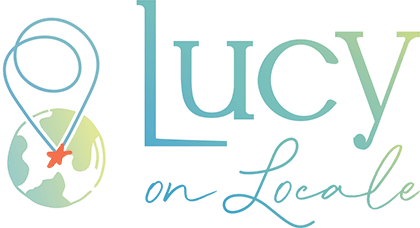
 Photography
Photography Points & Miles
Points & Miles Credit Cards
Credit Cards